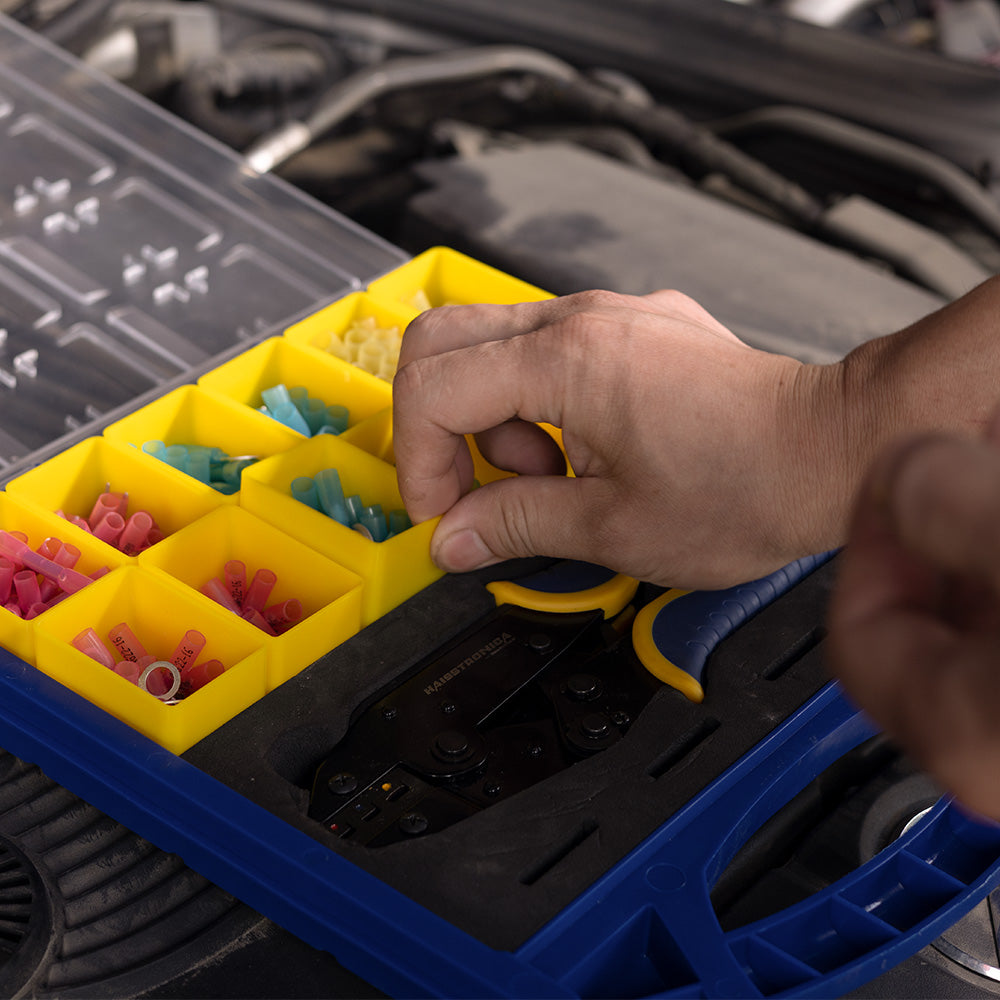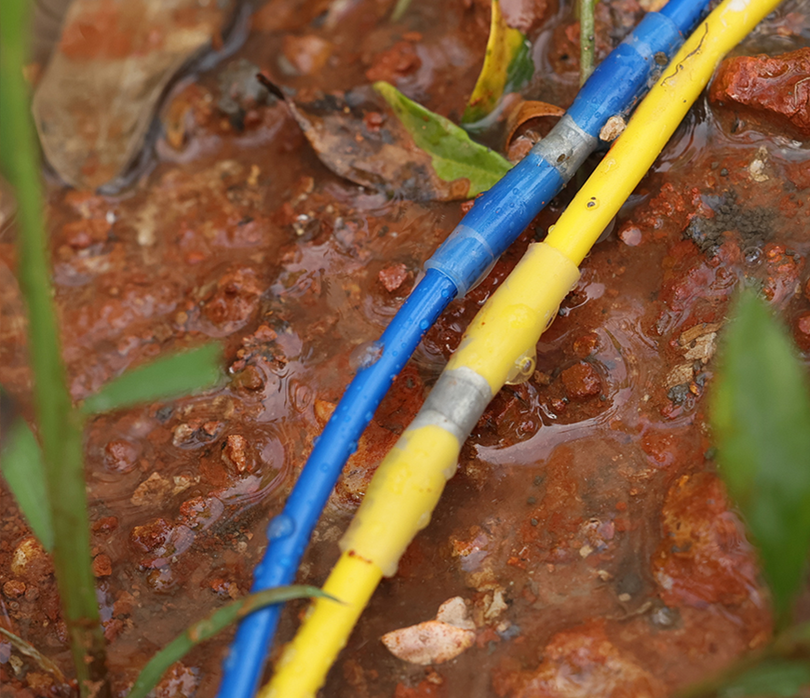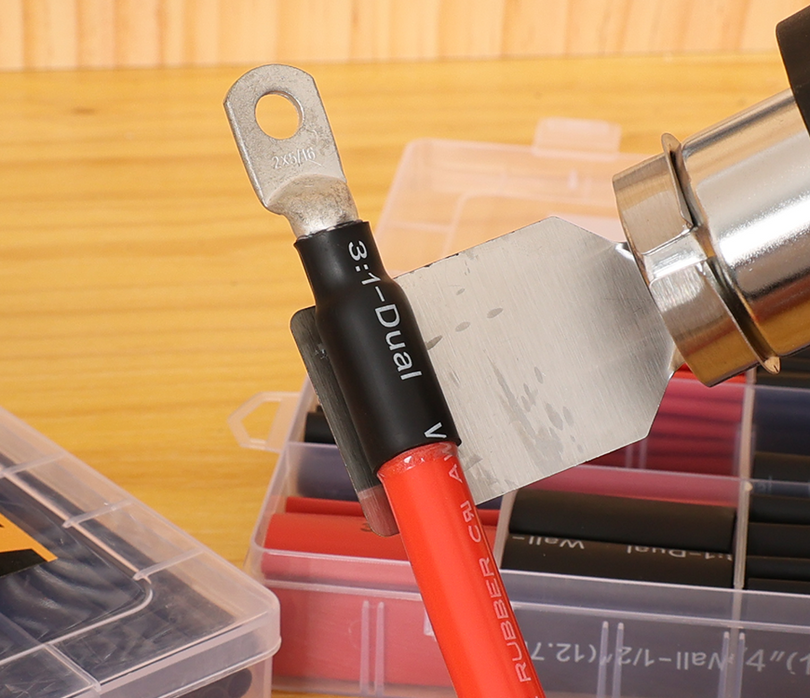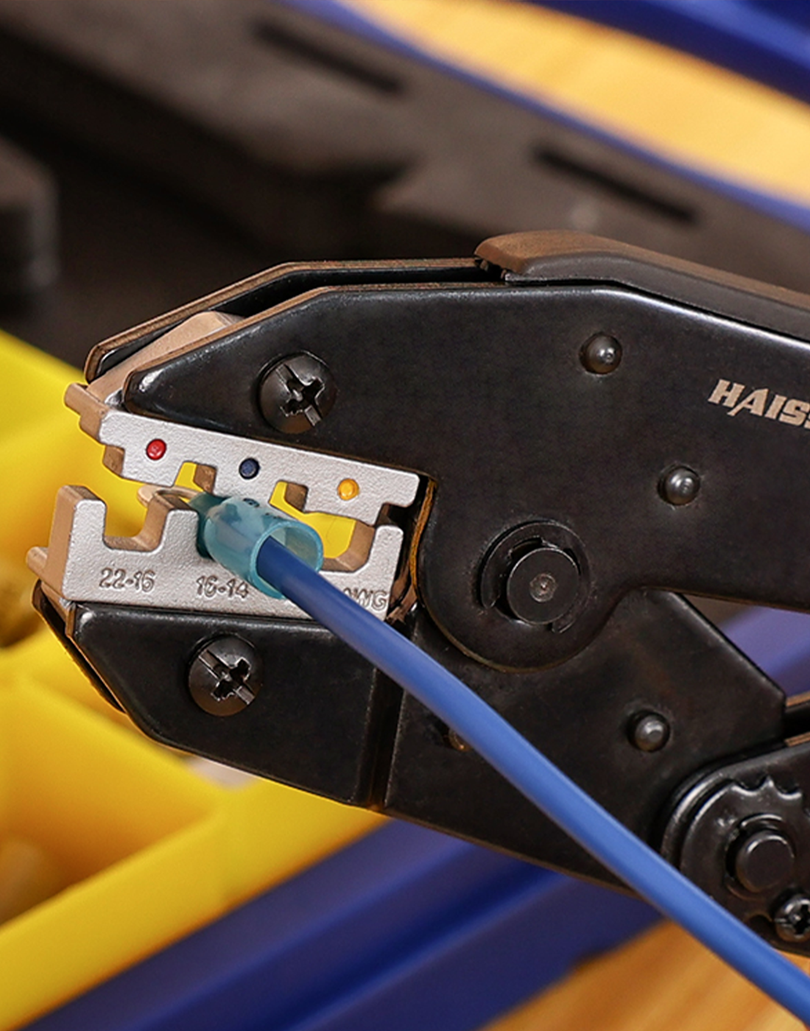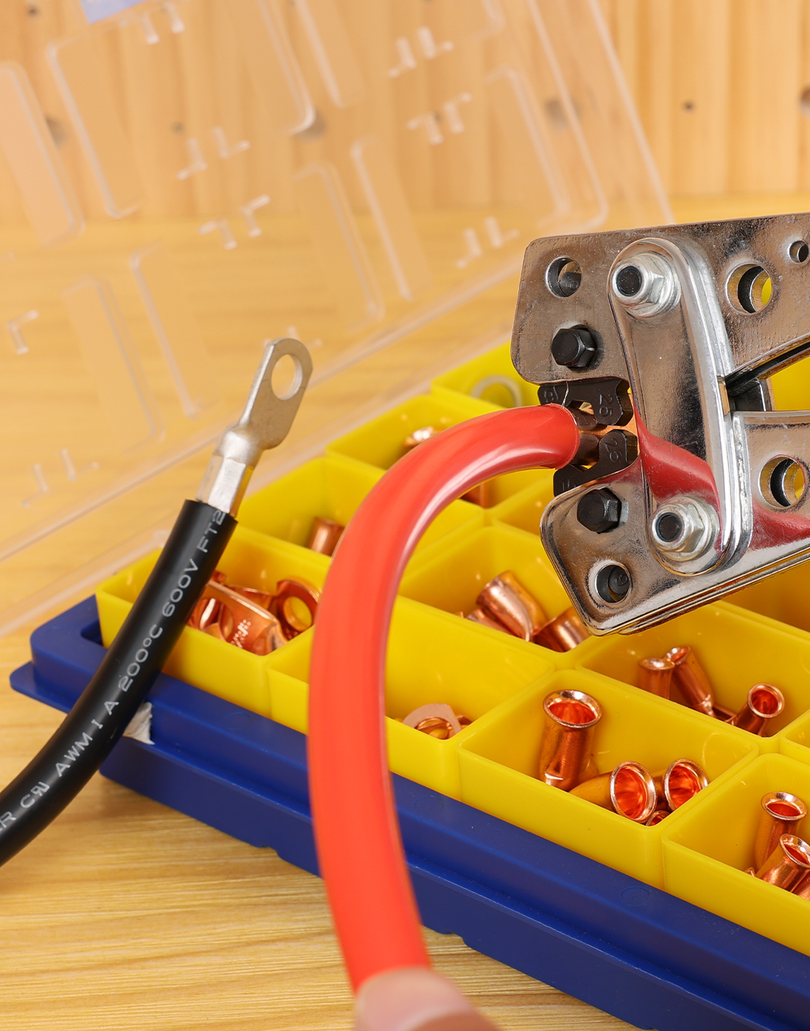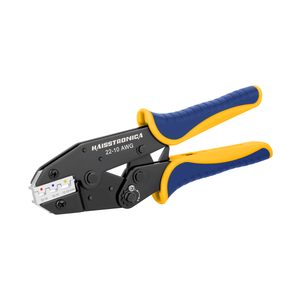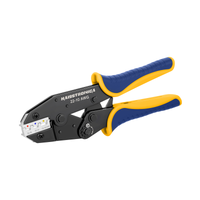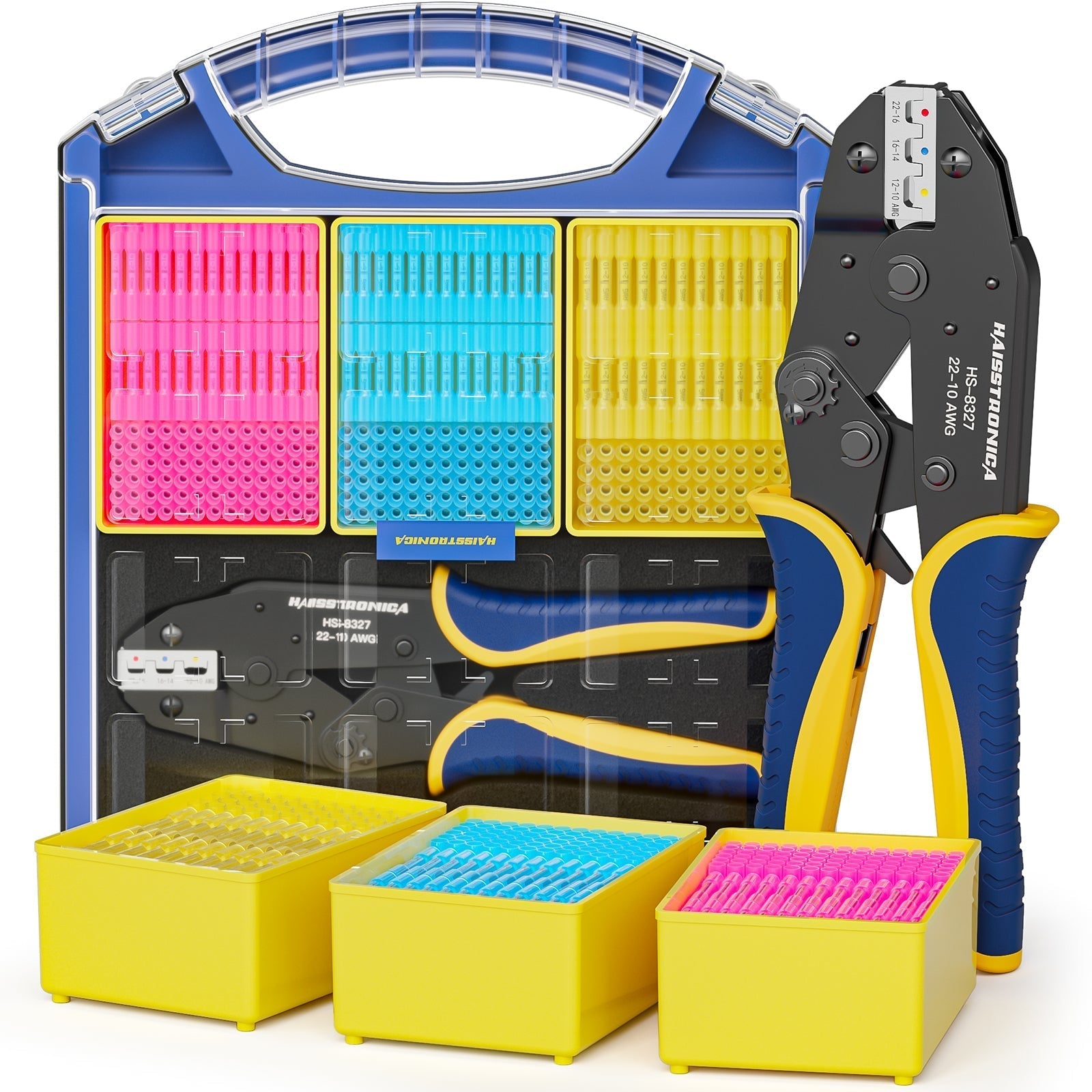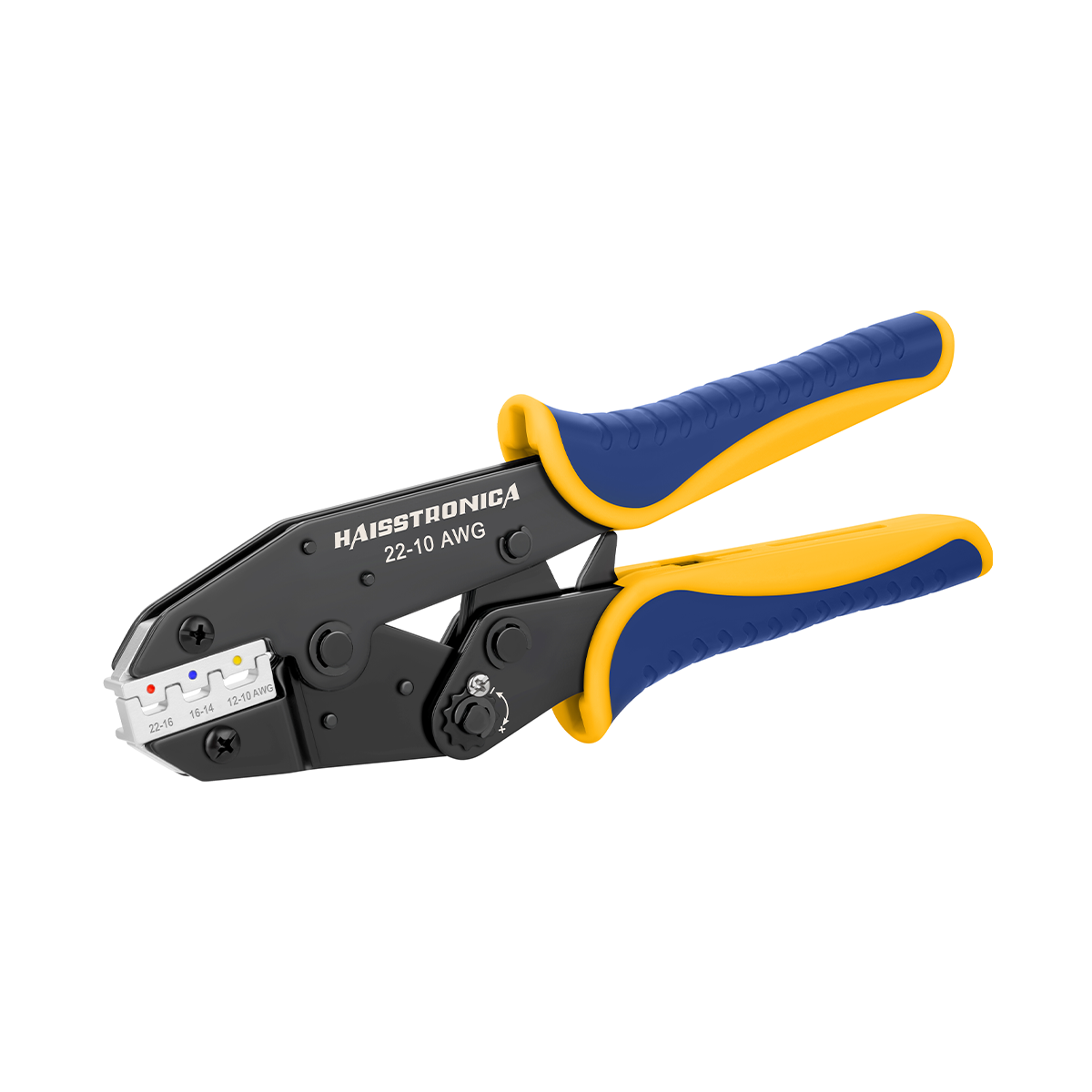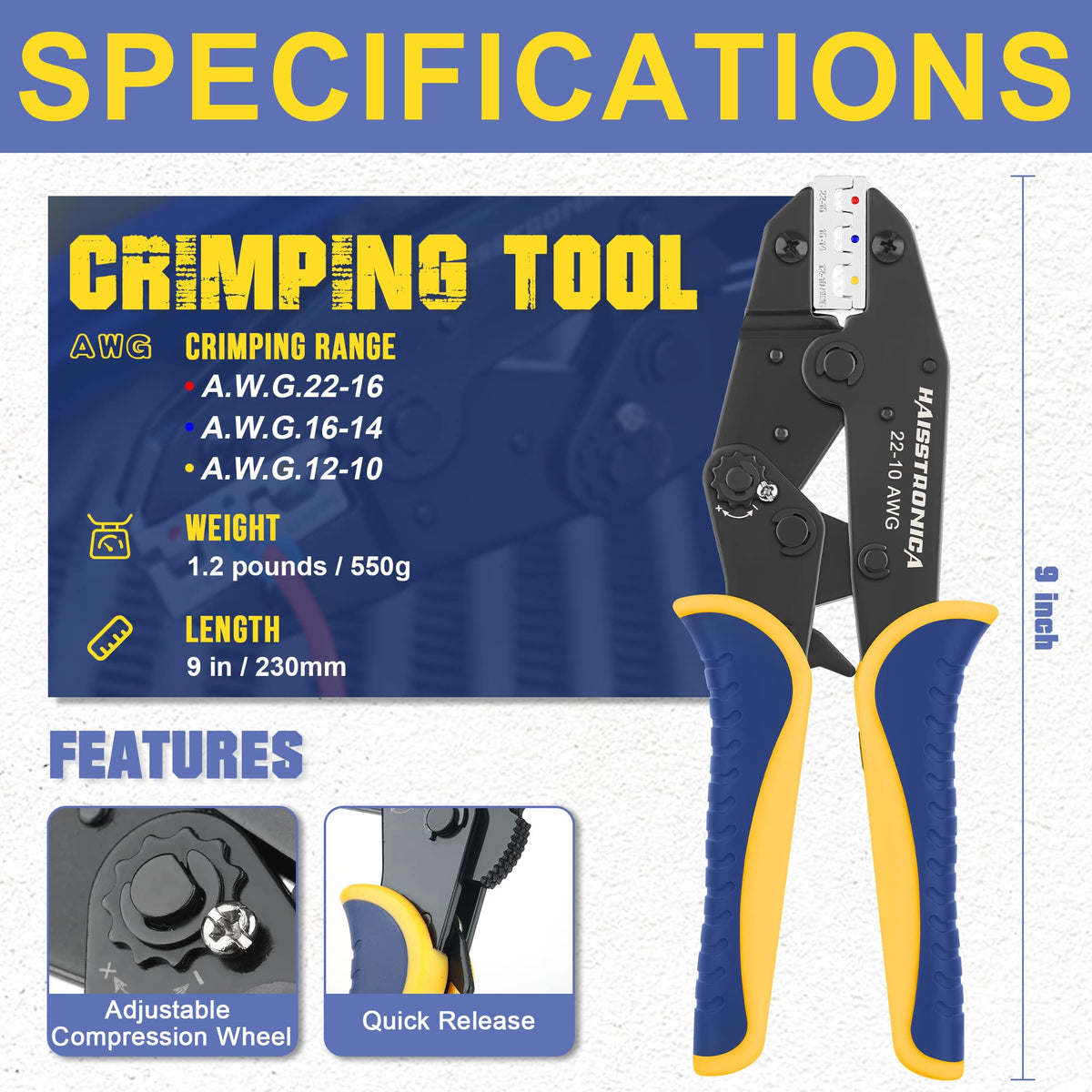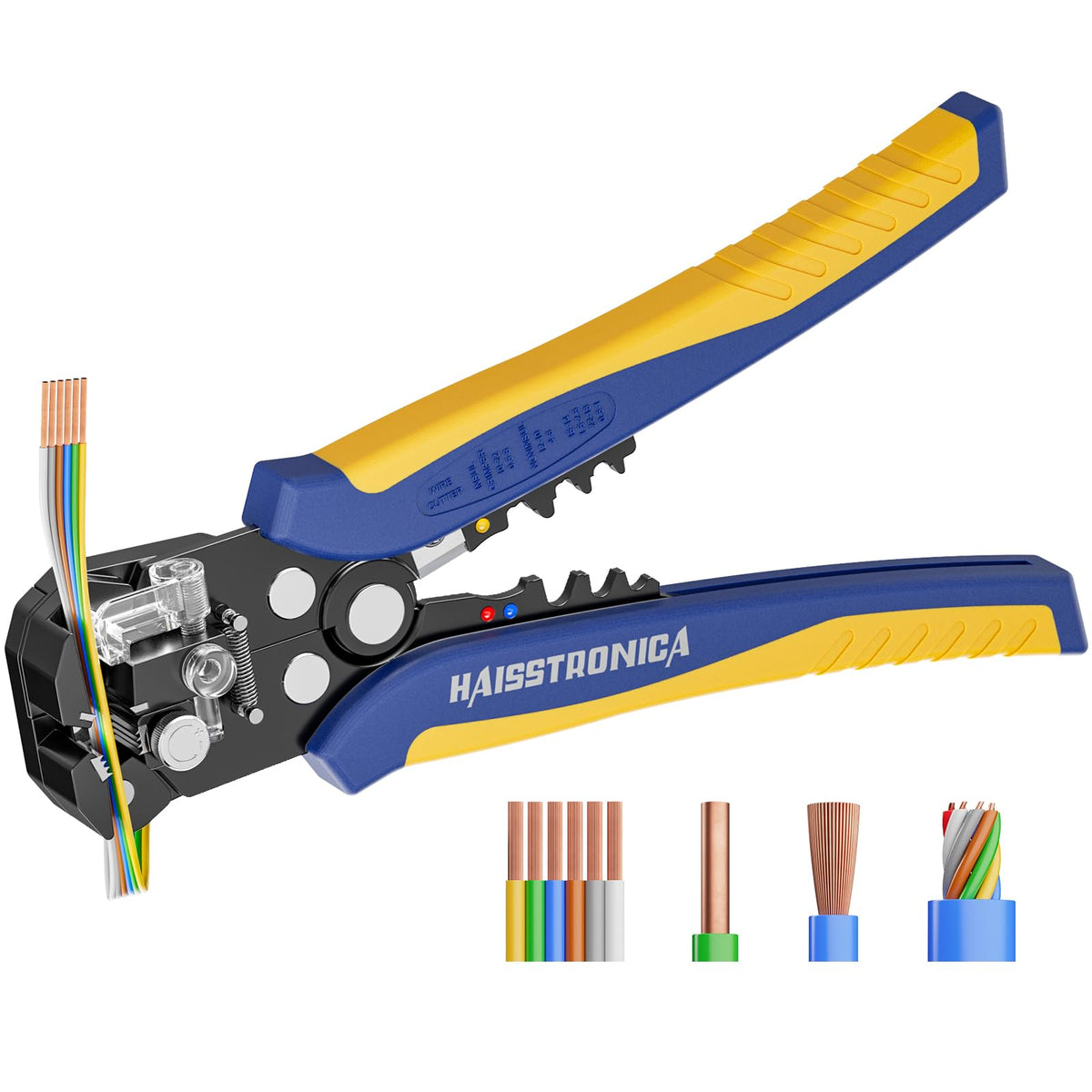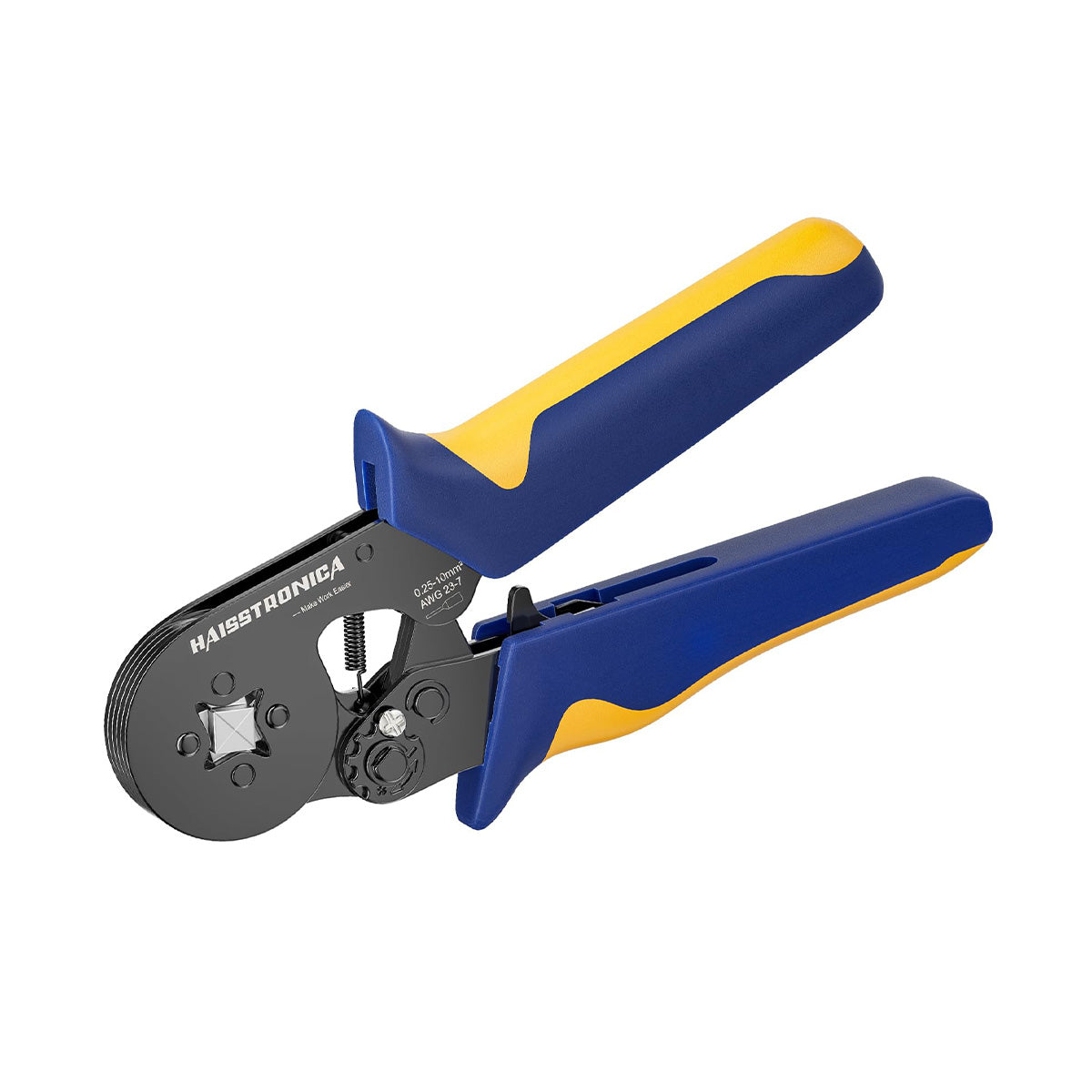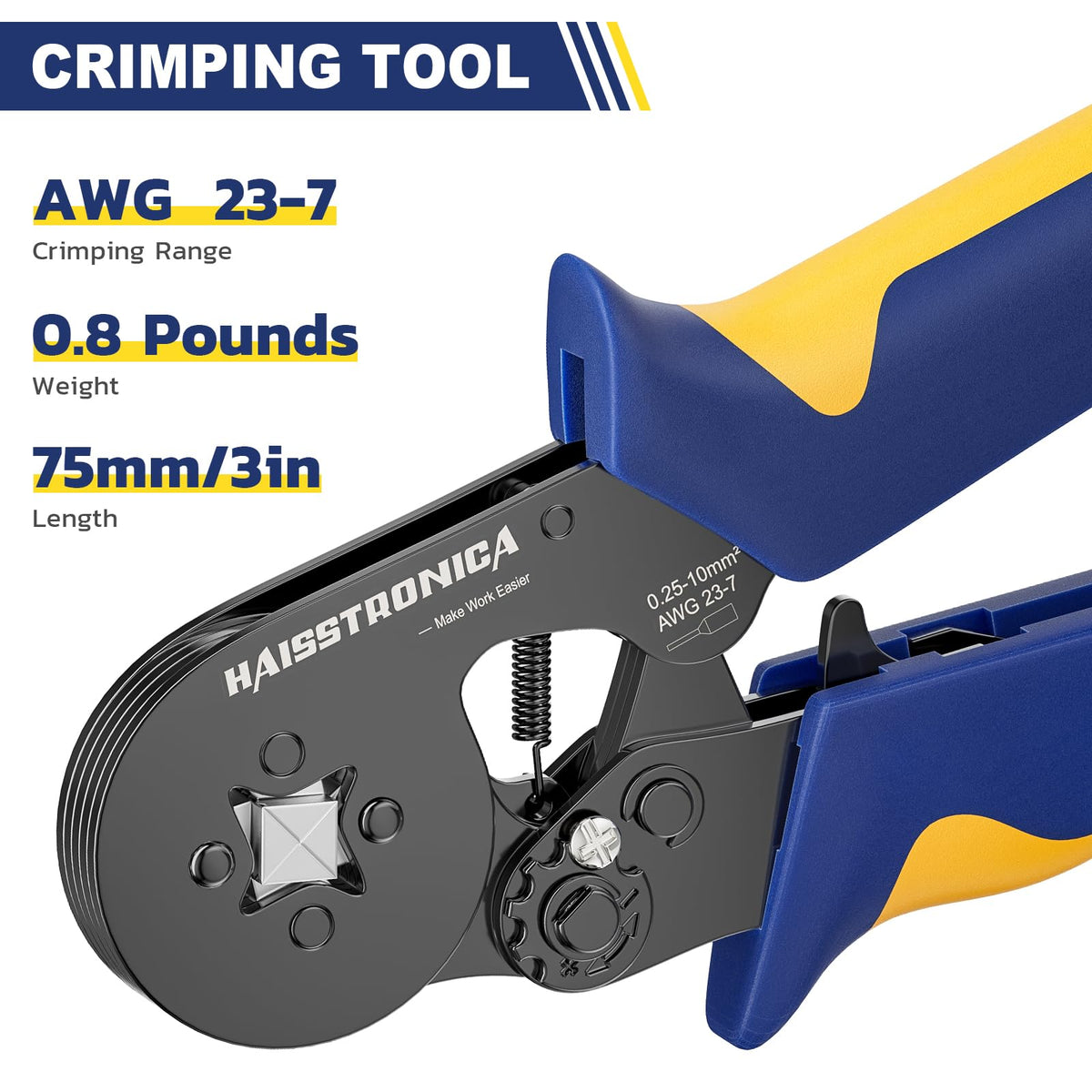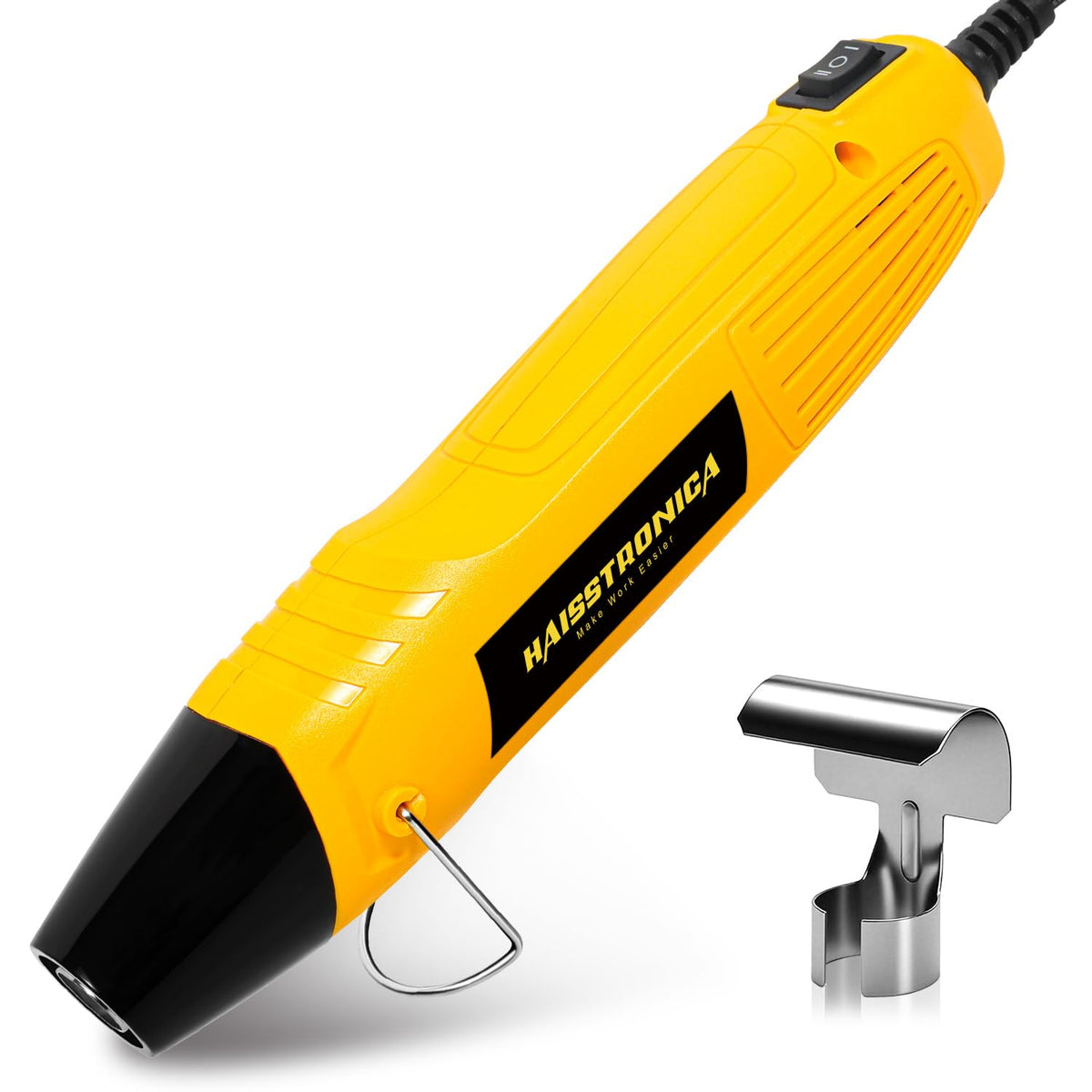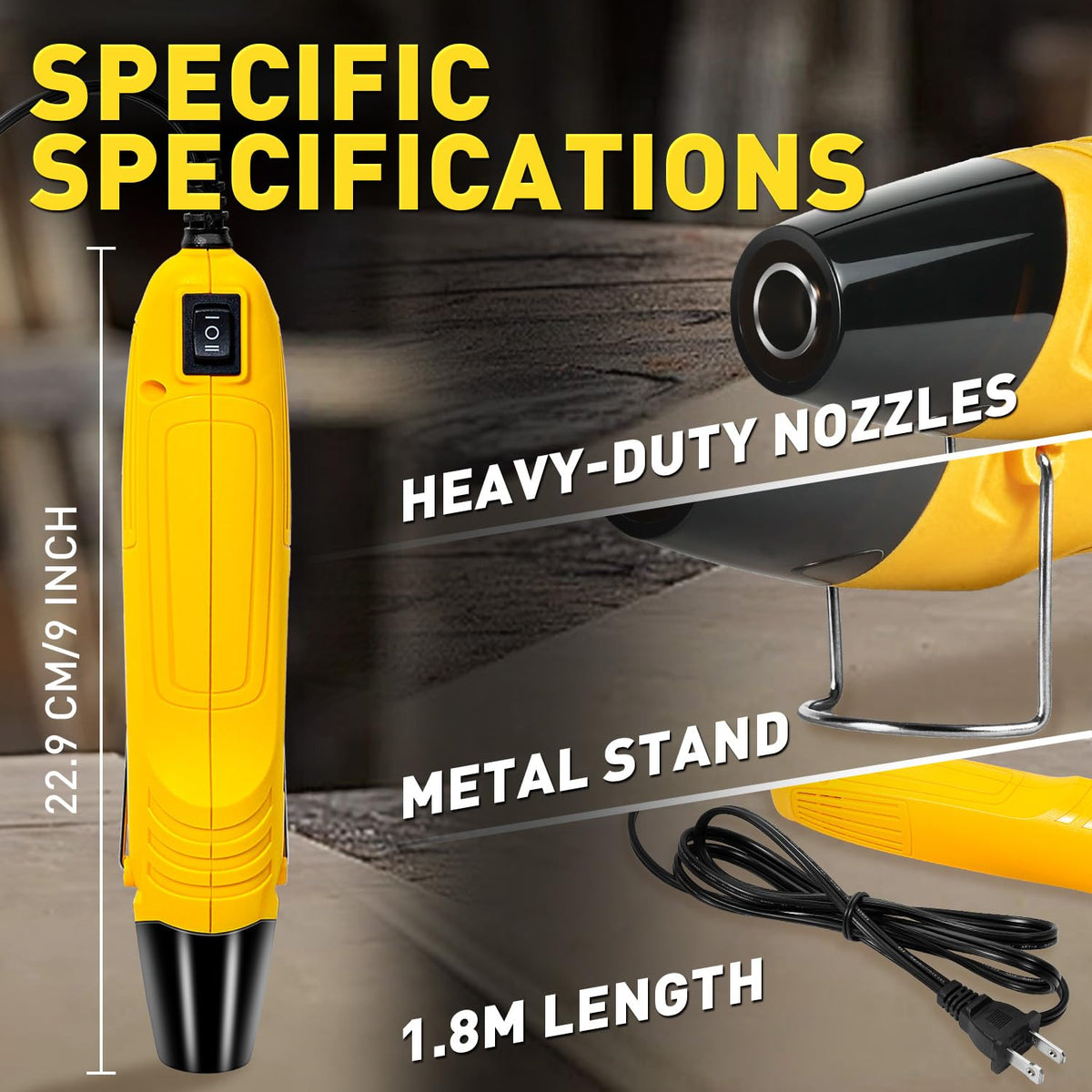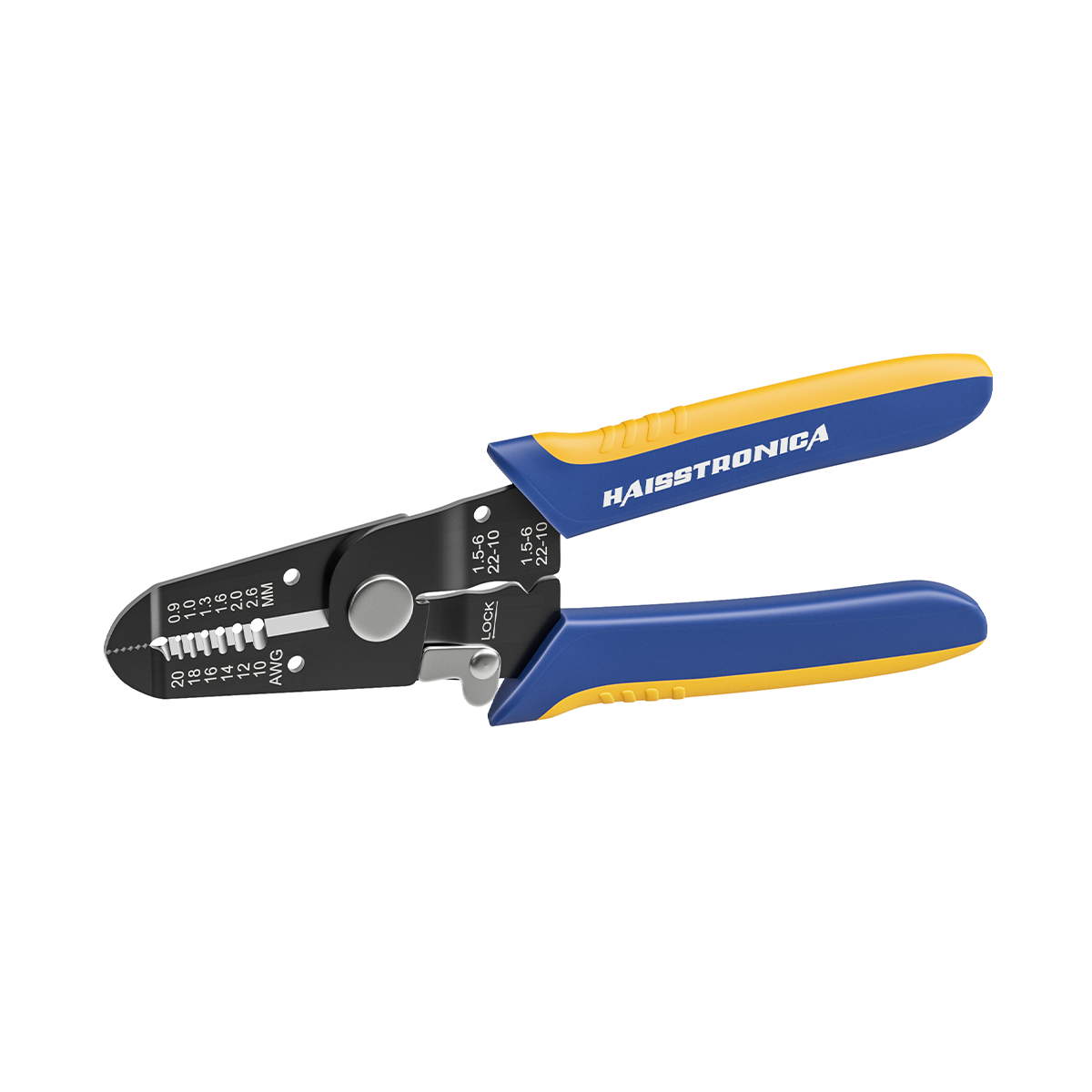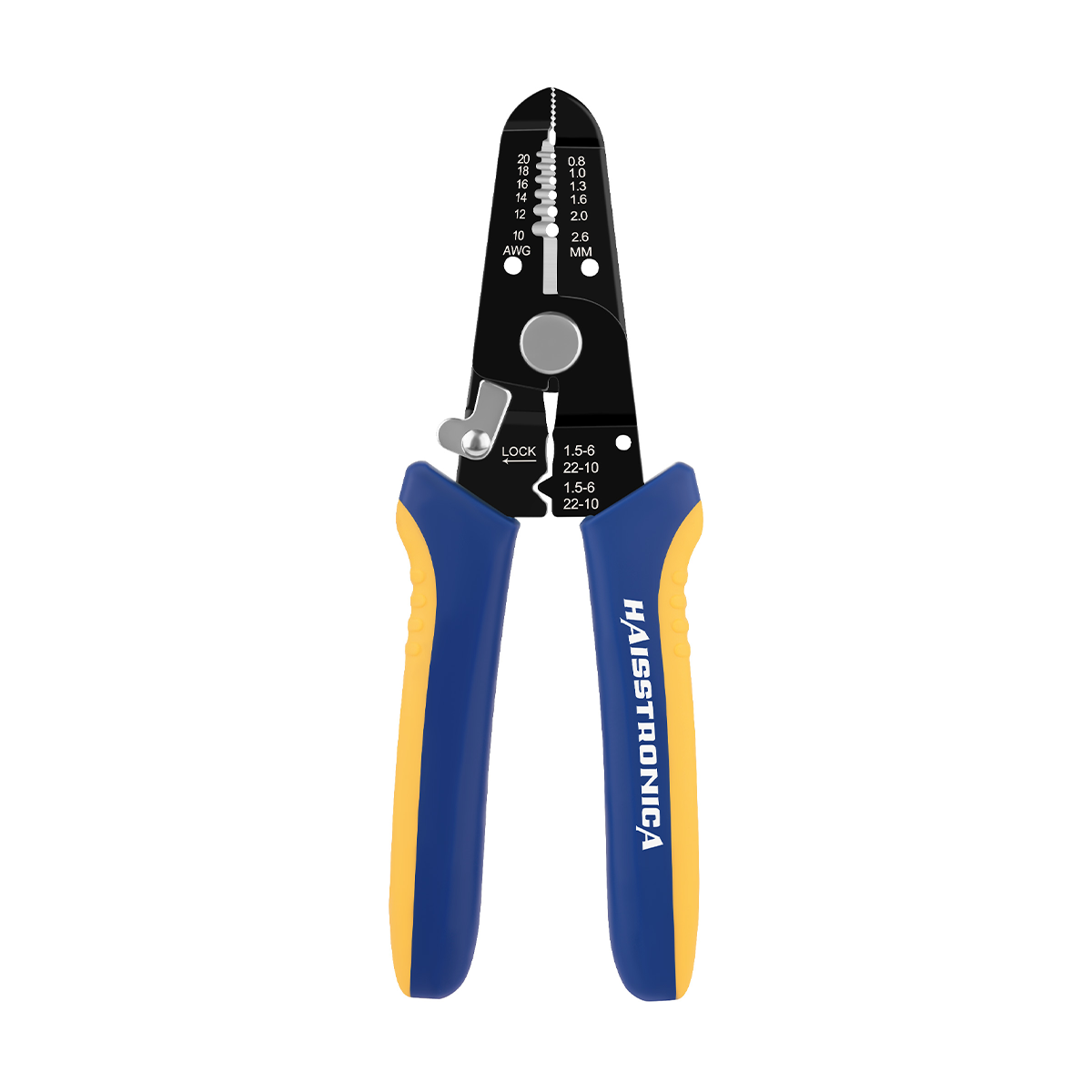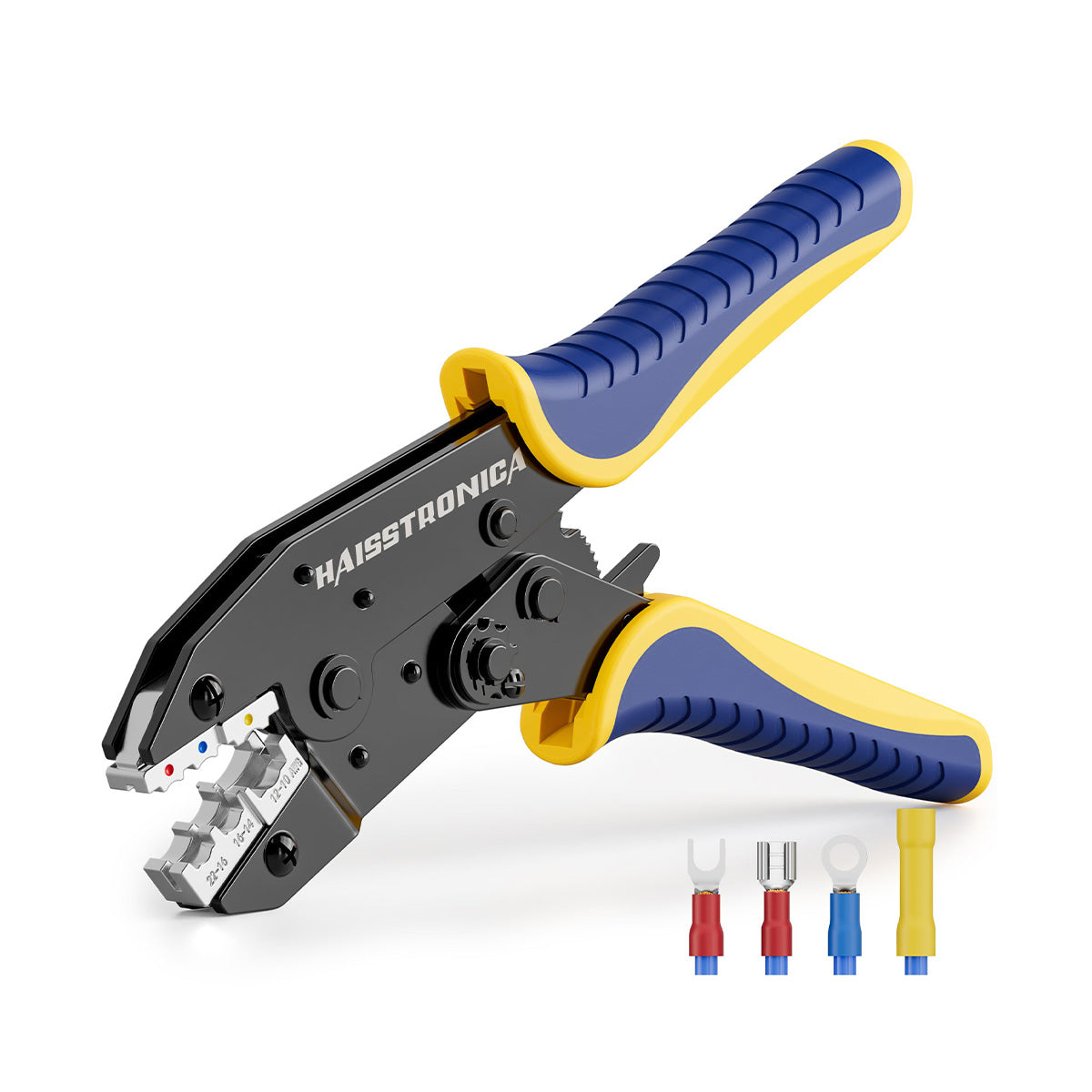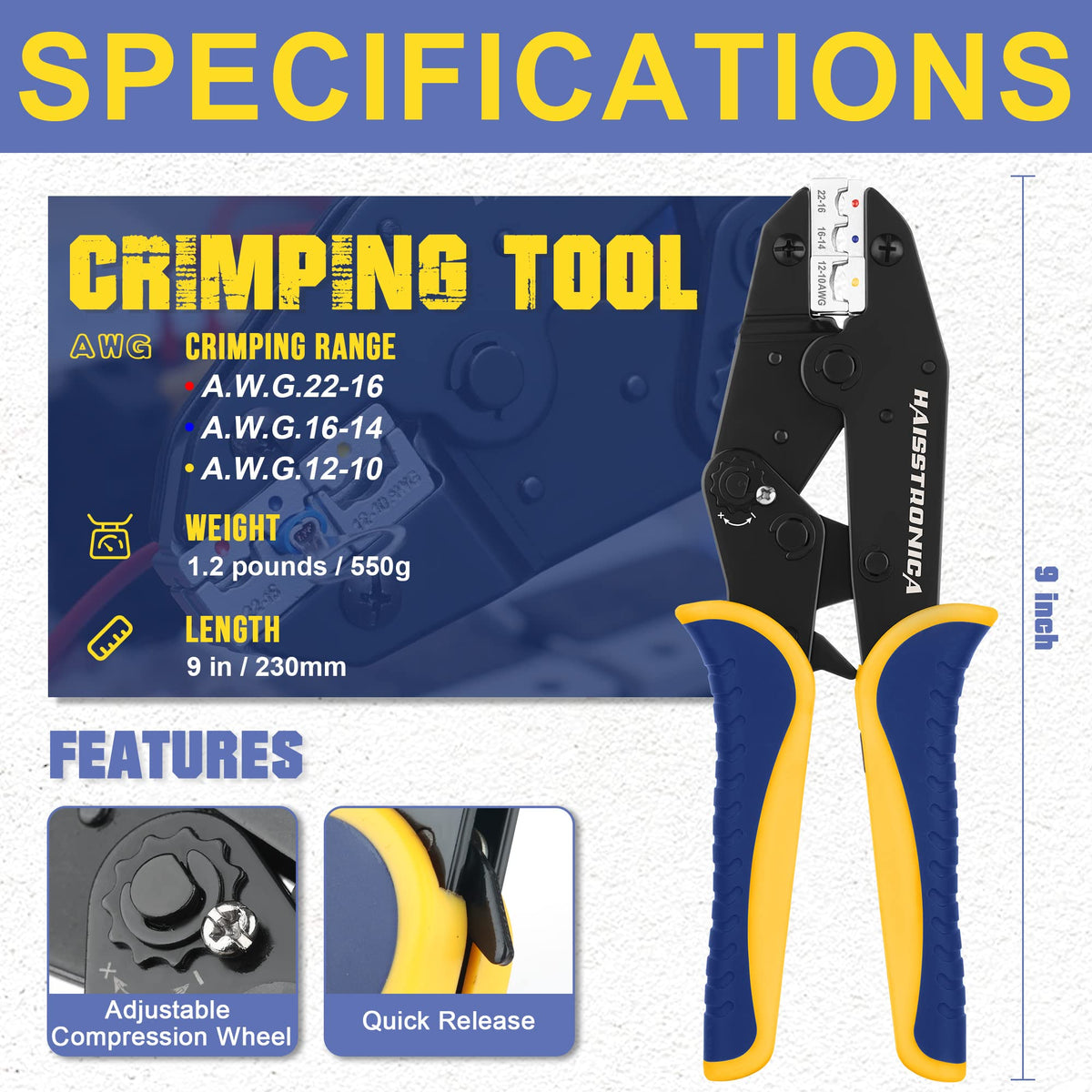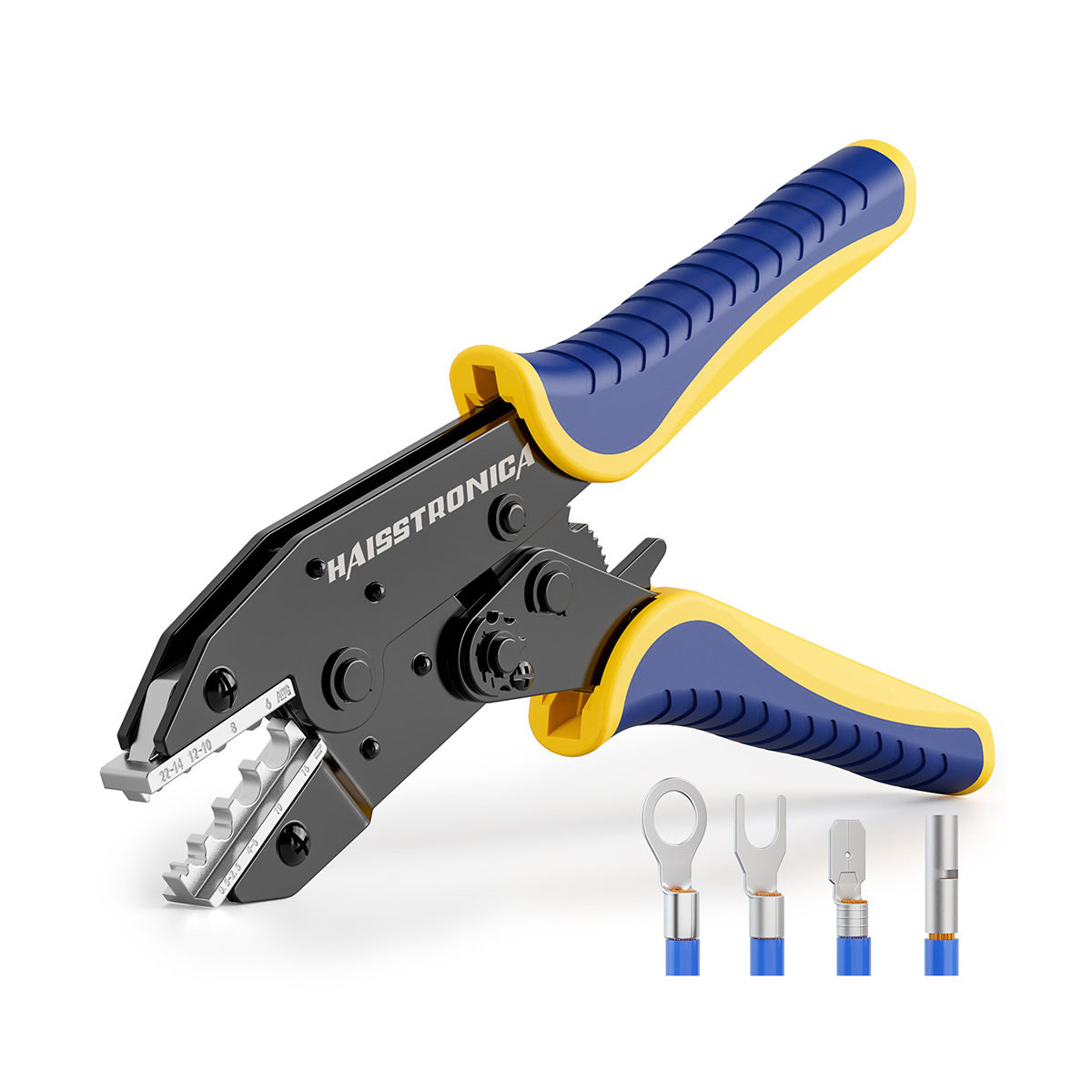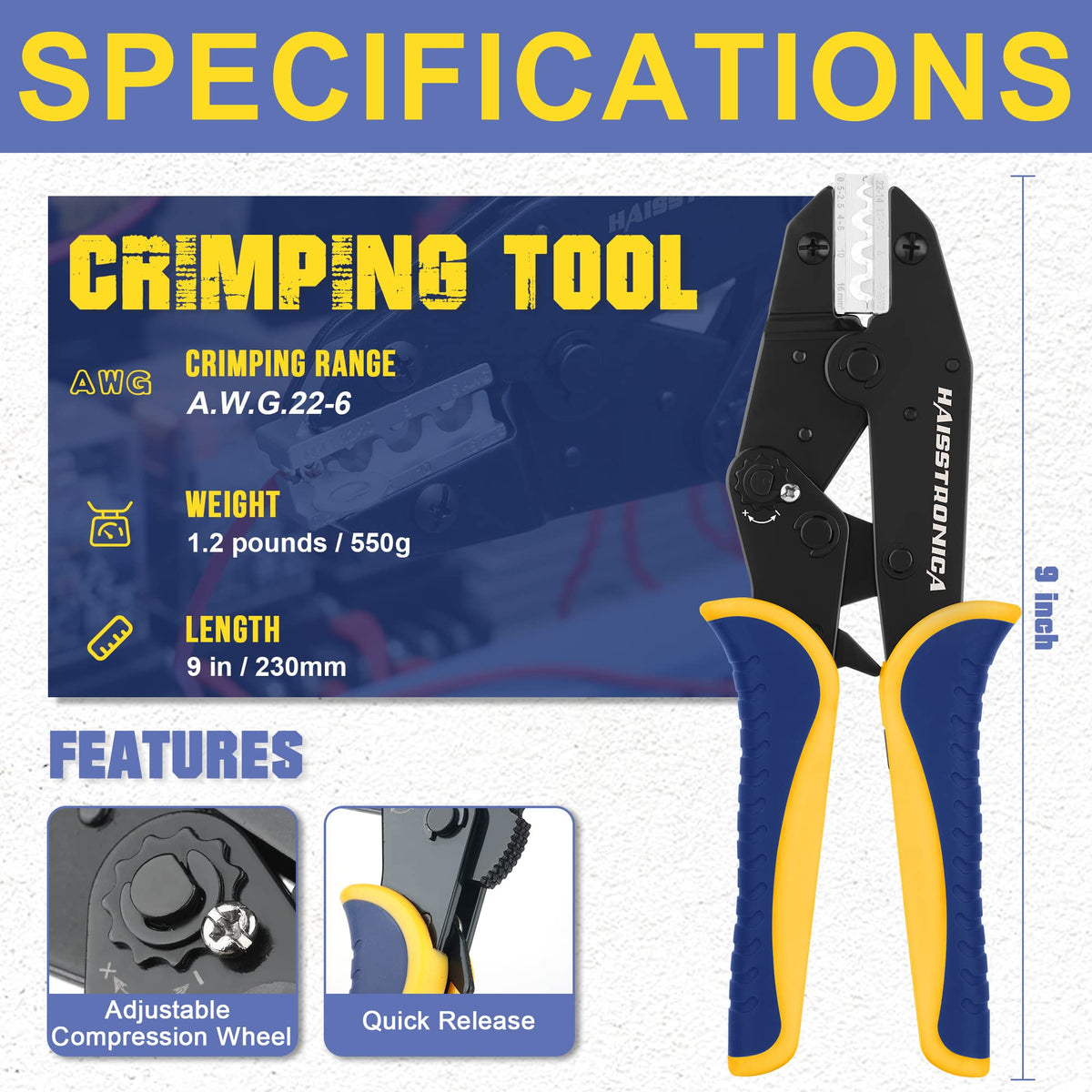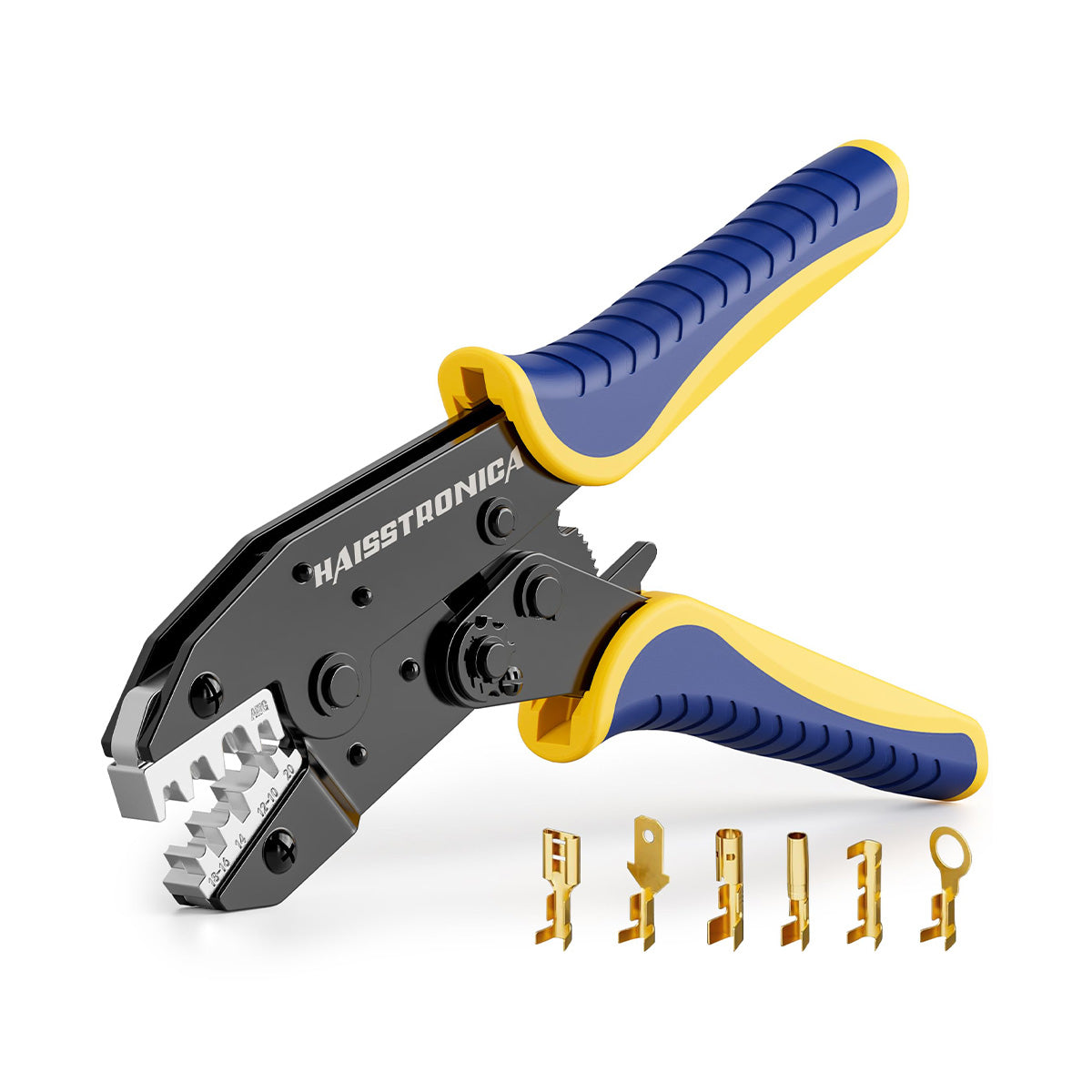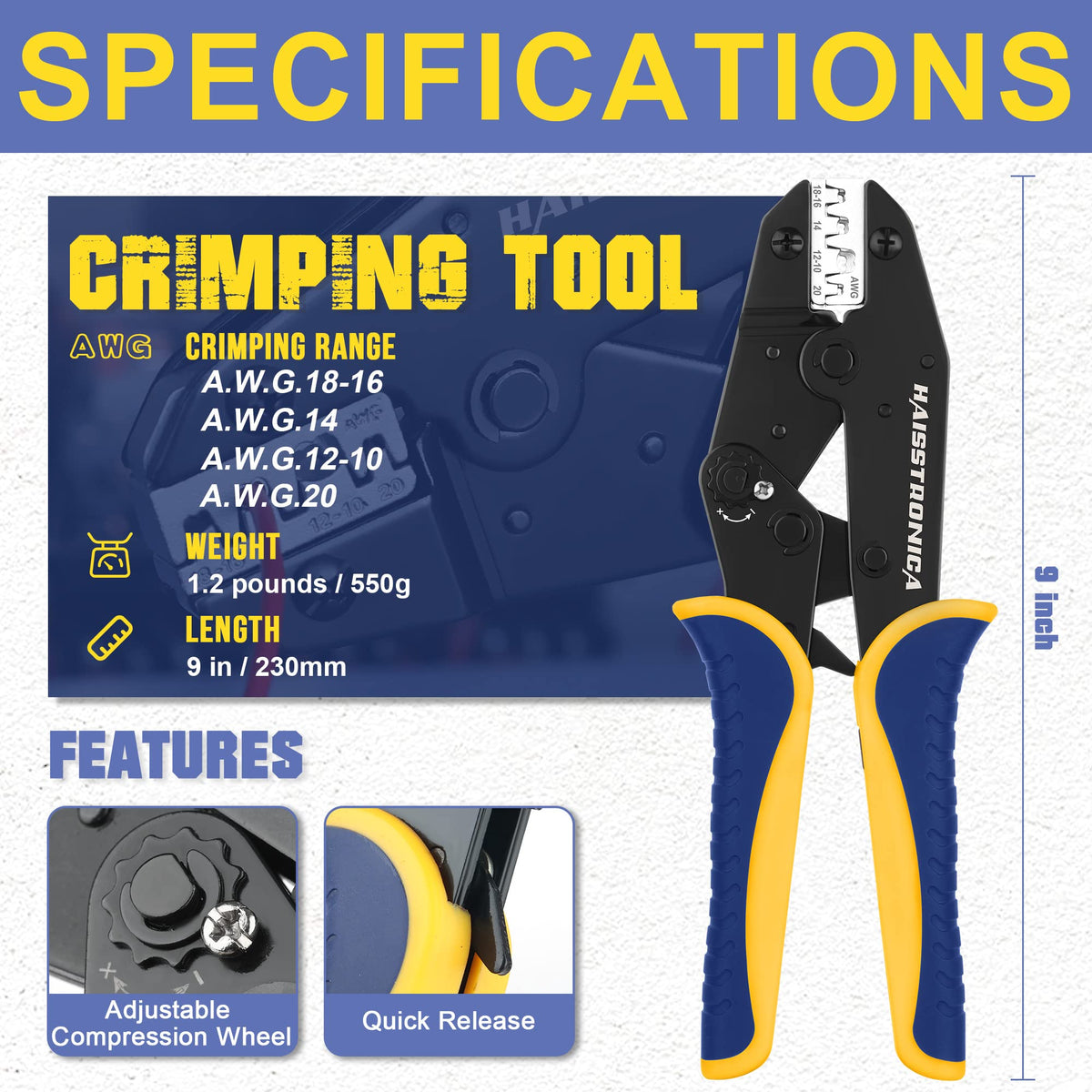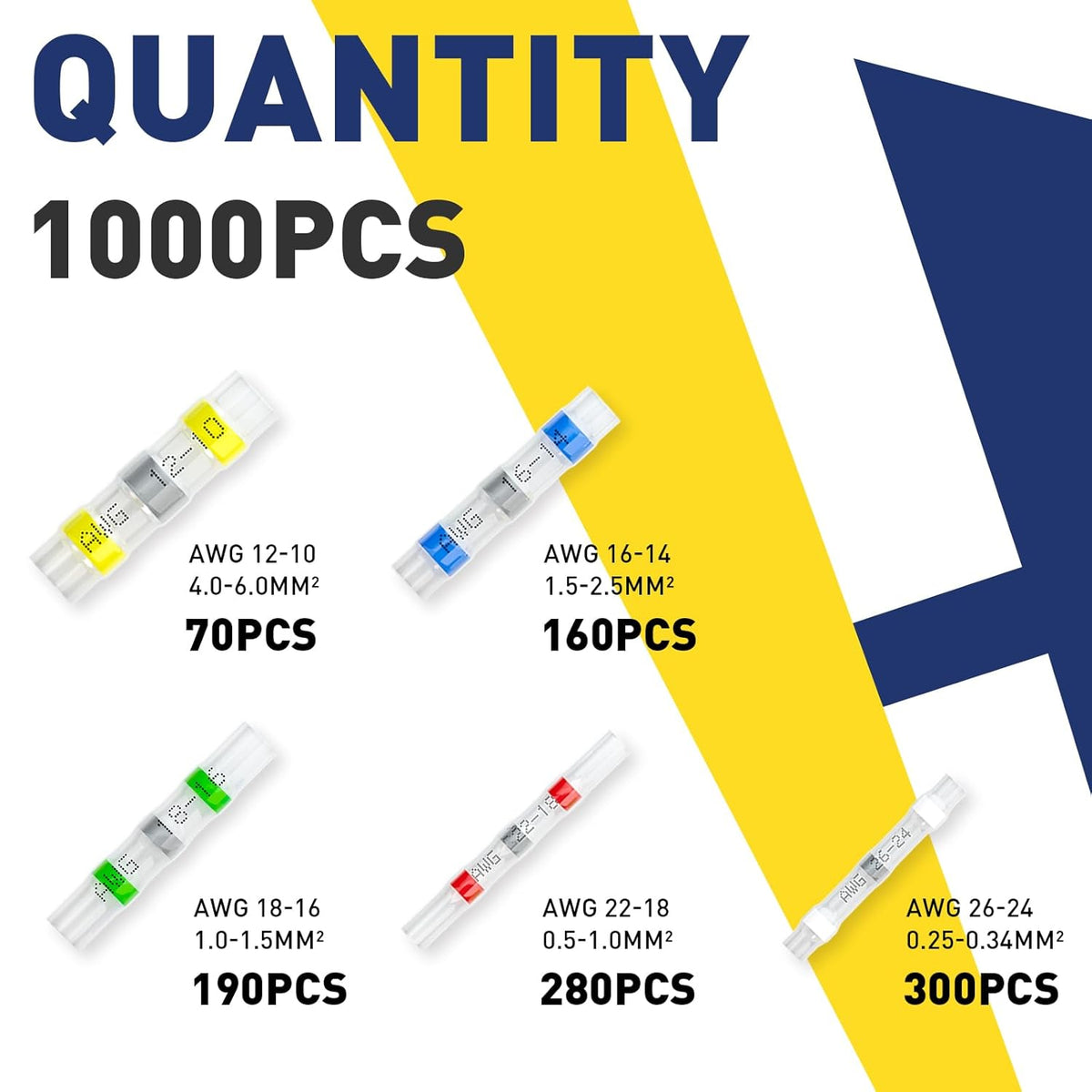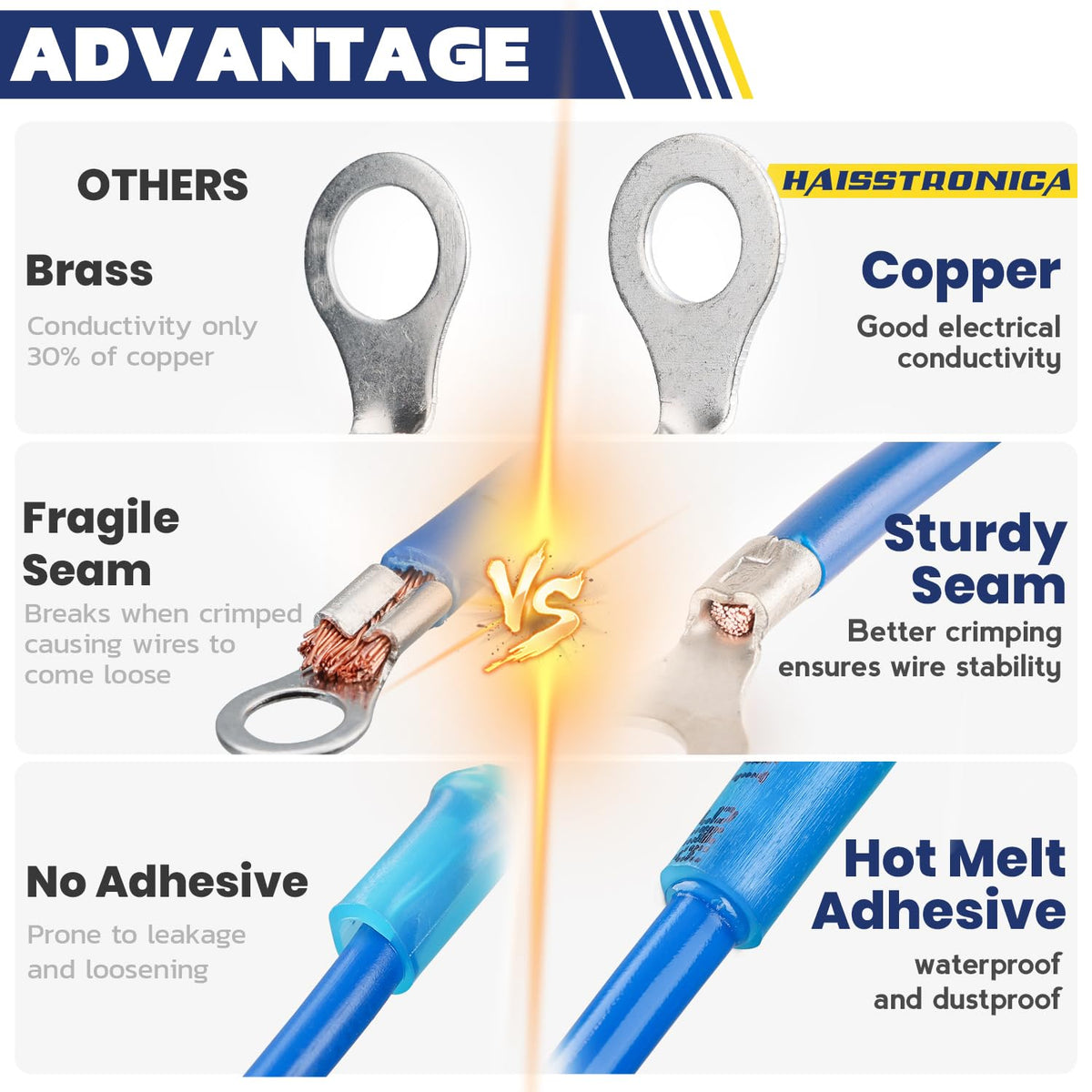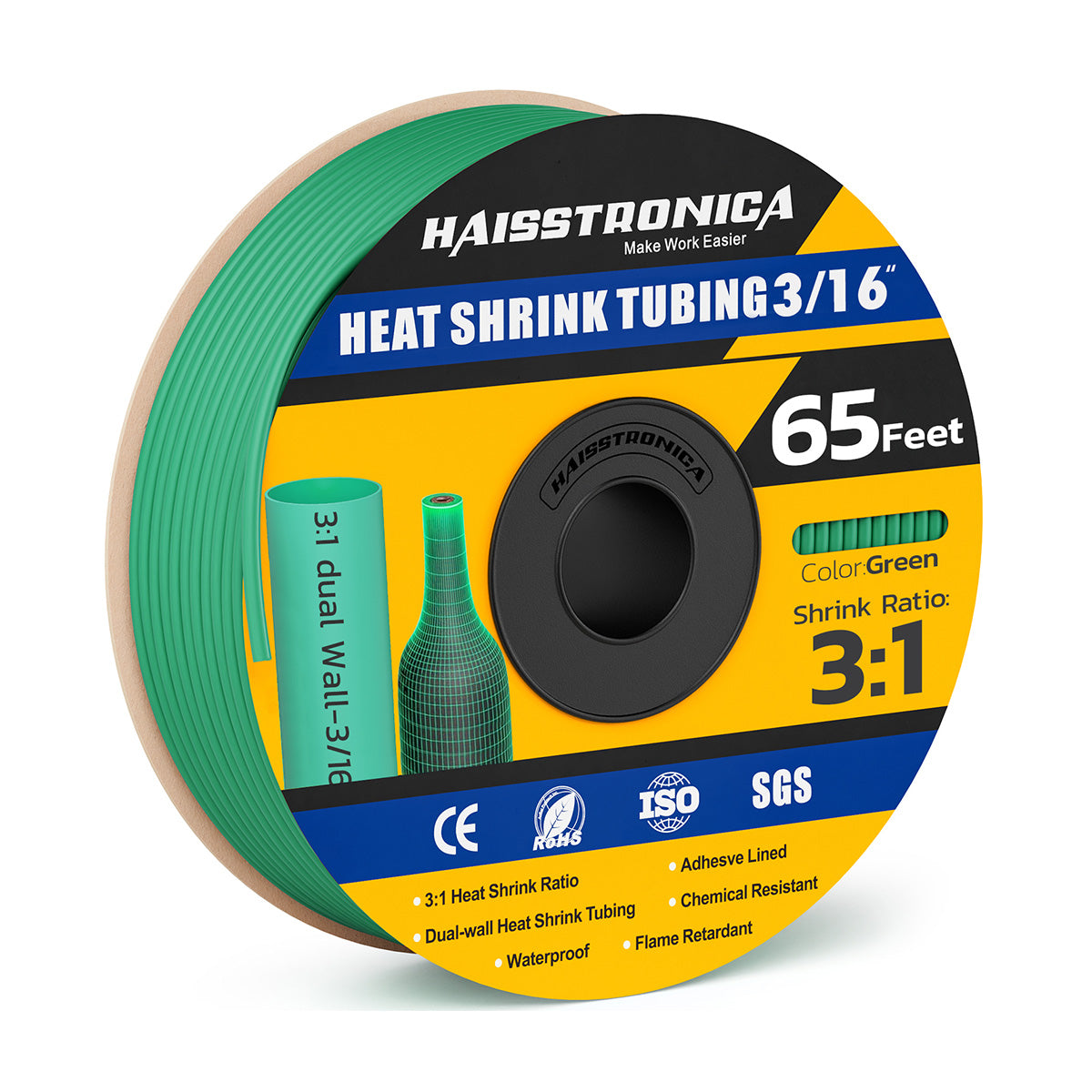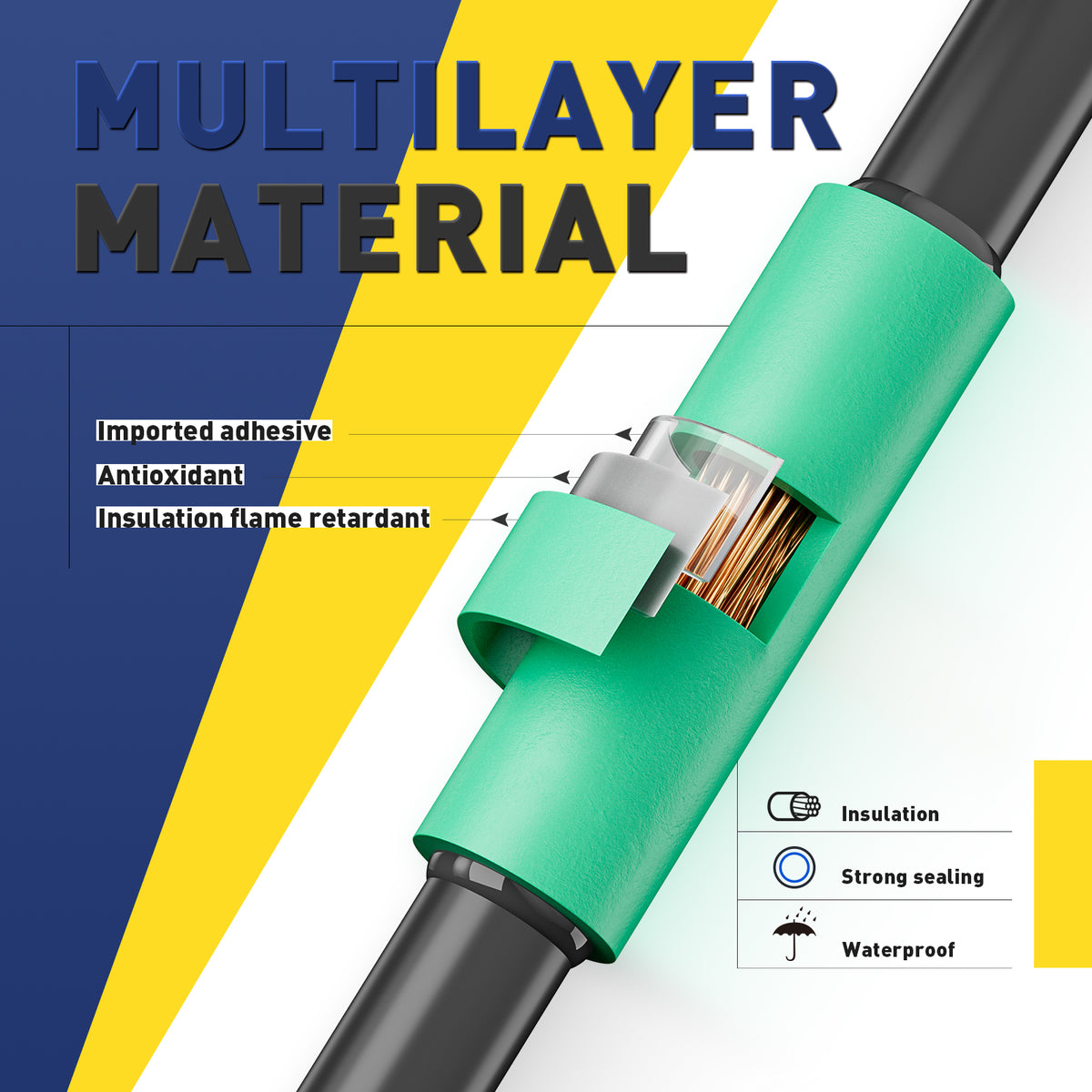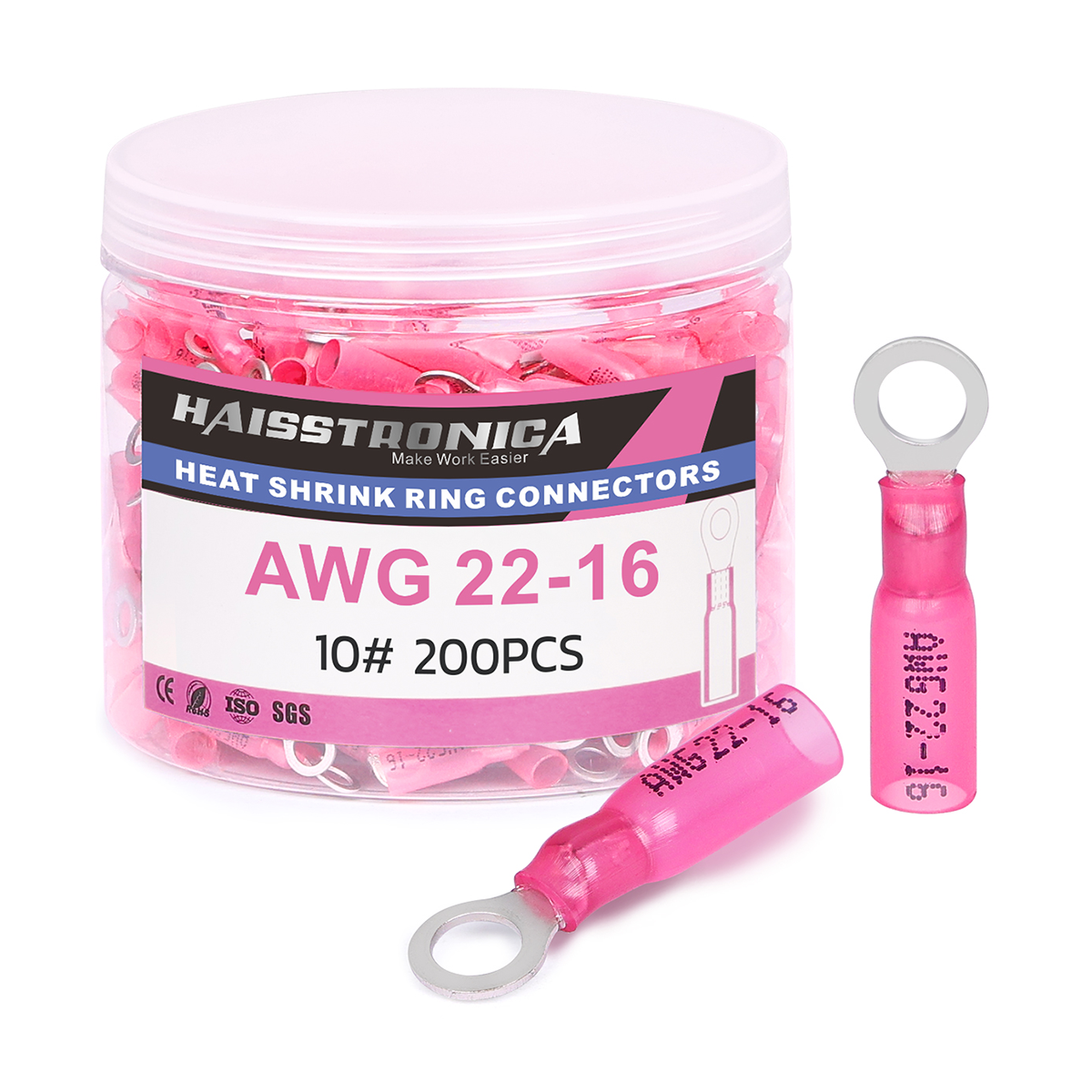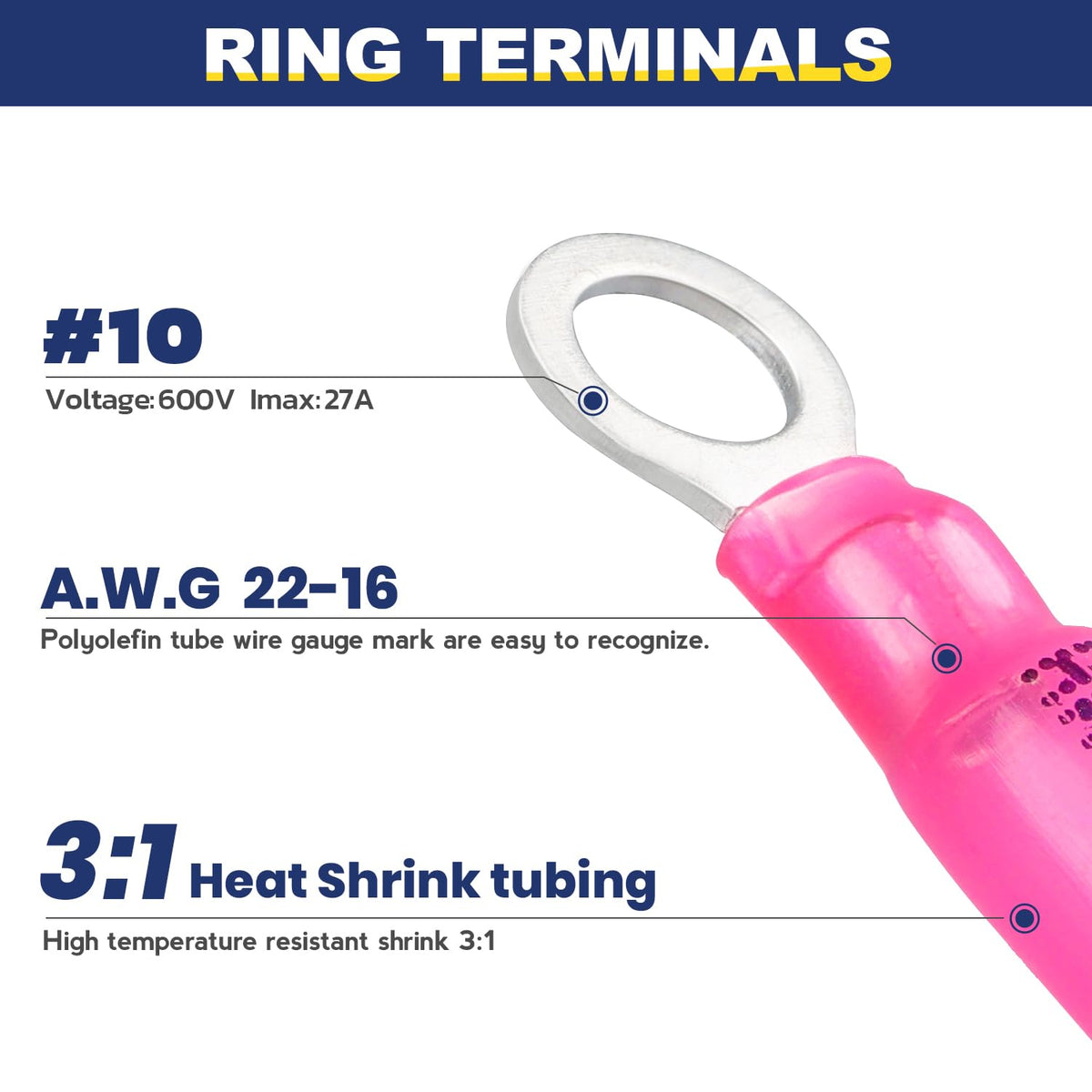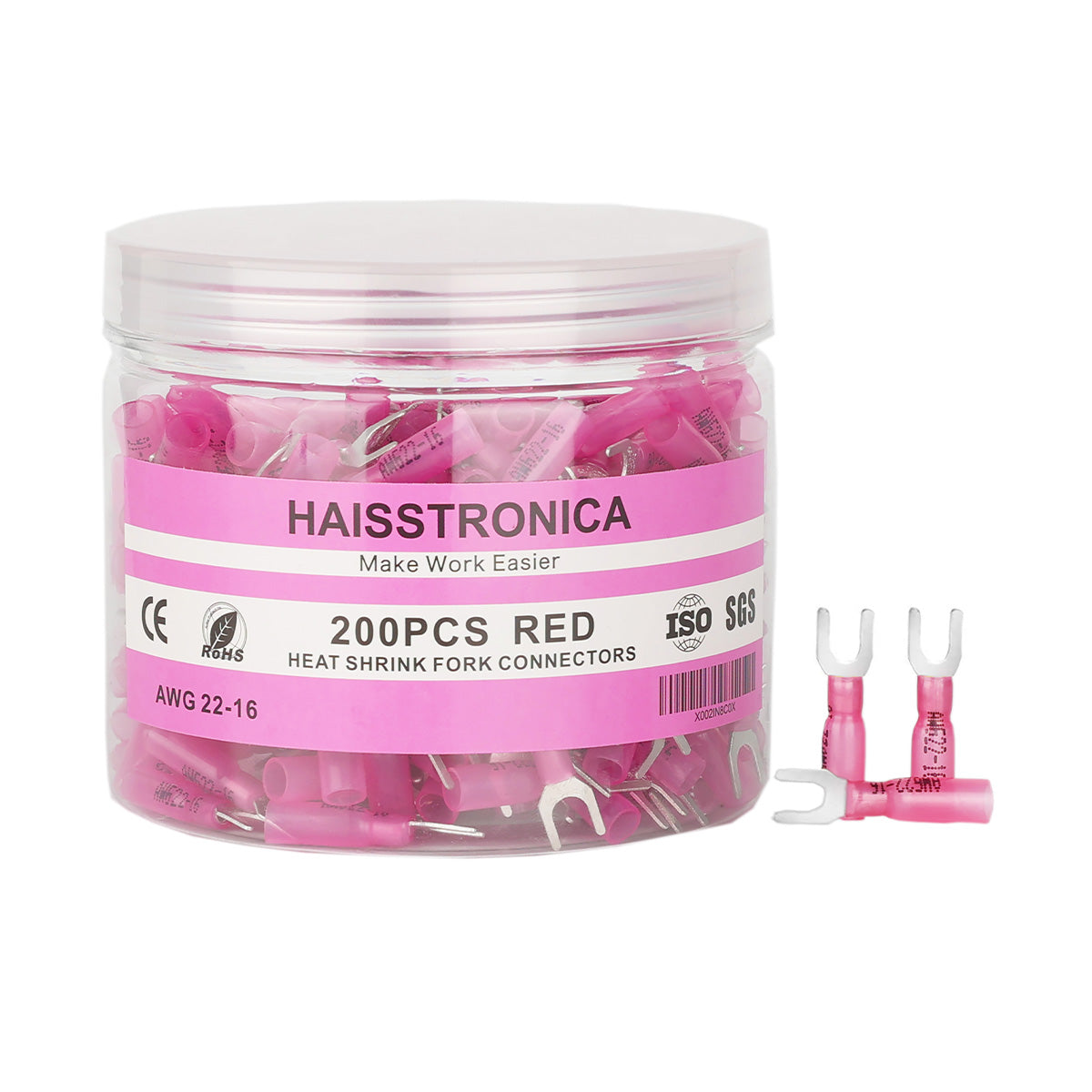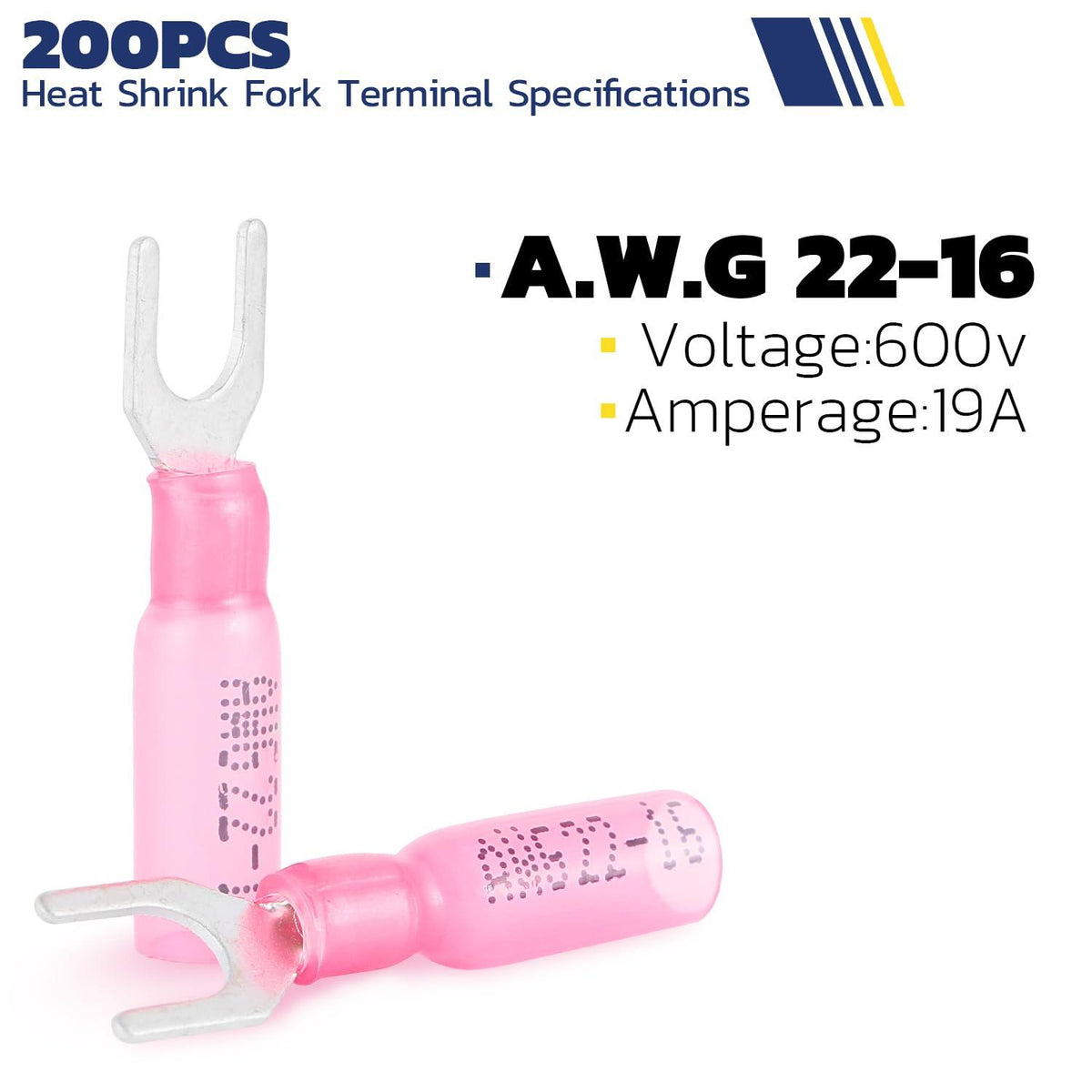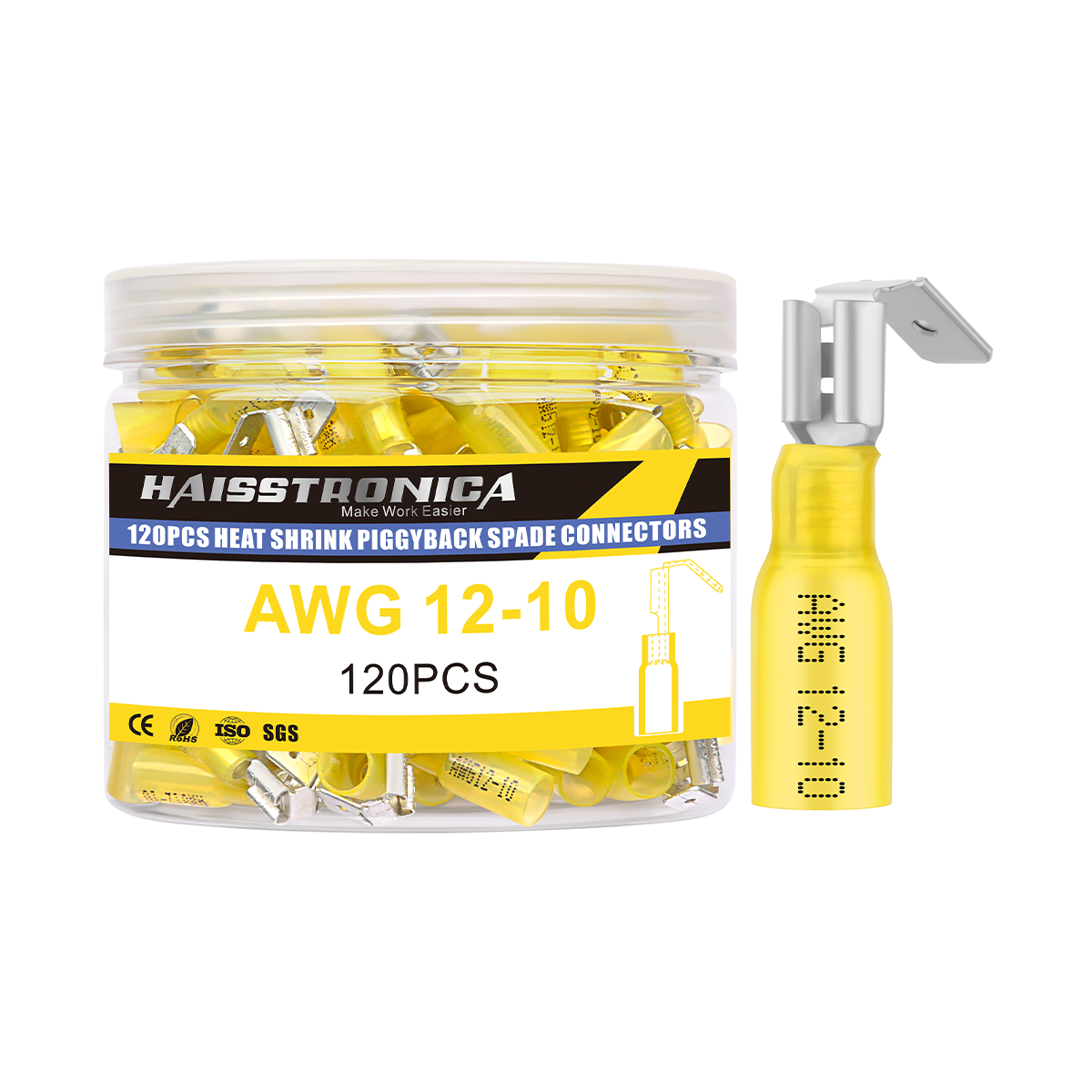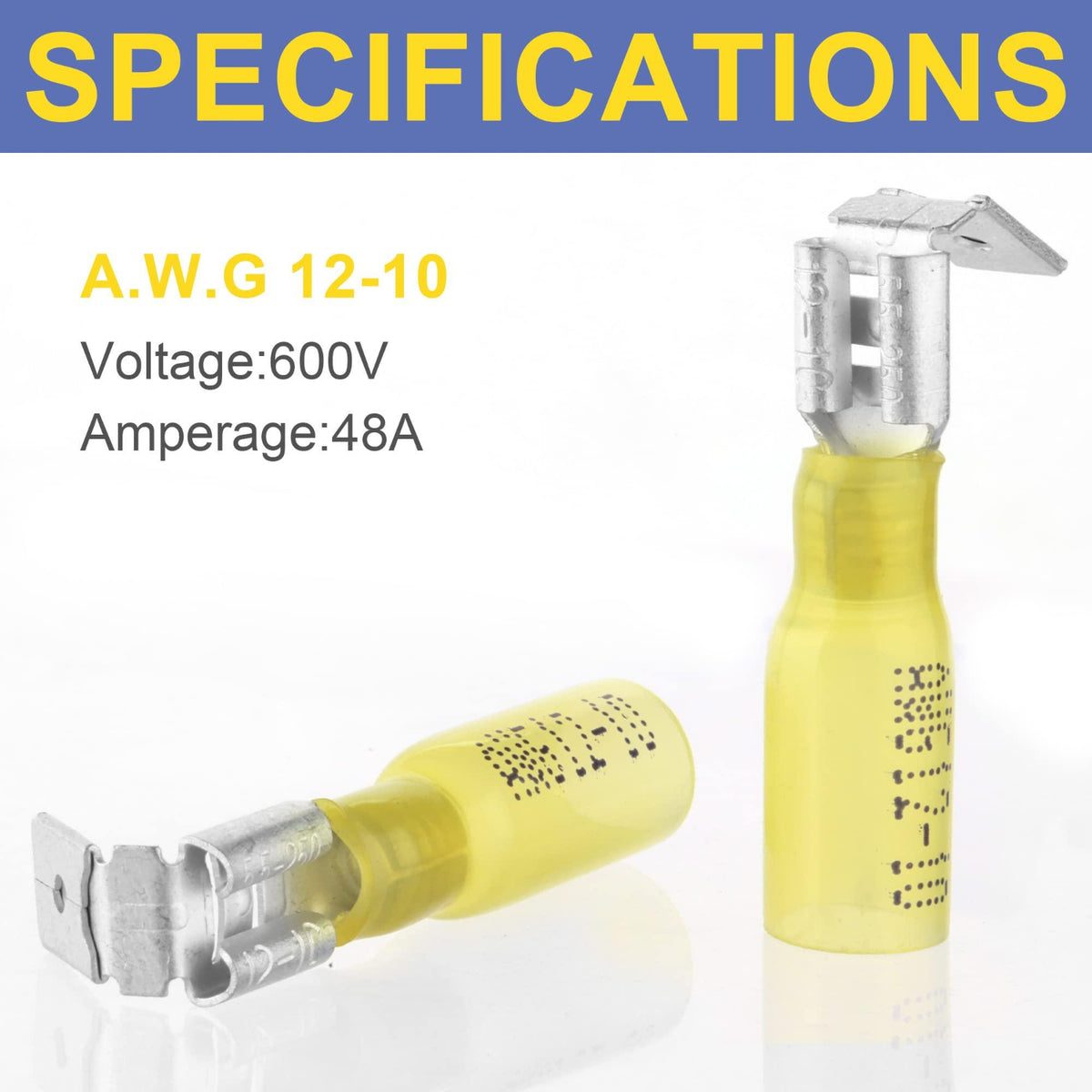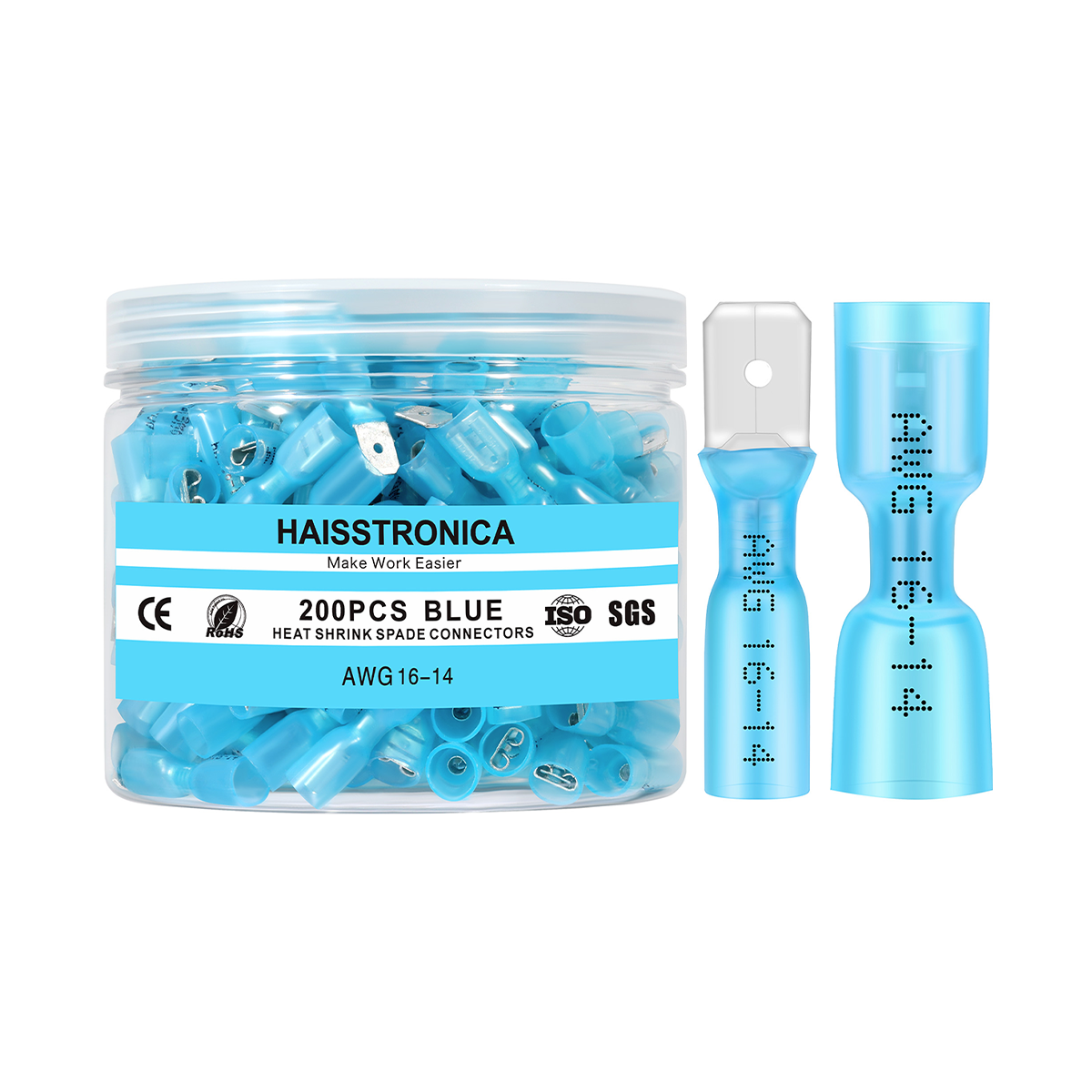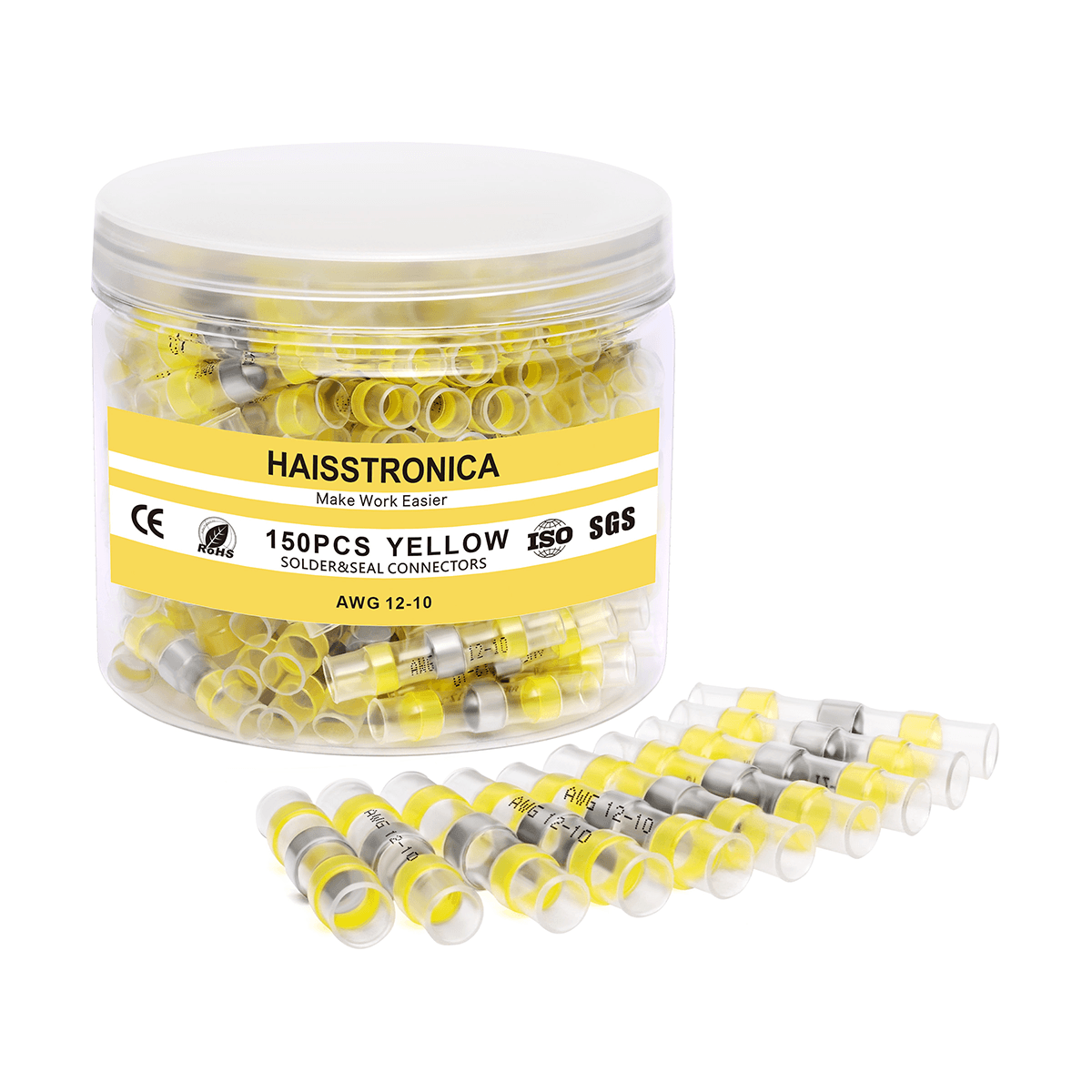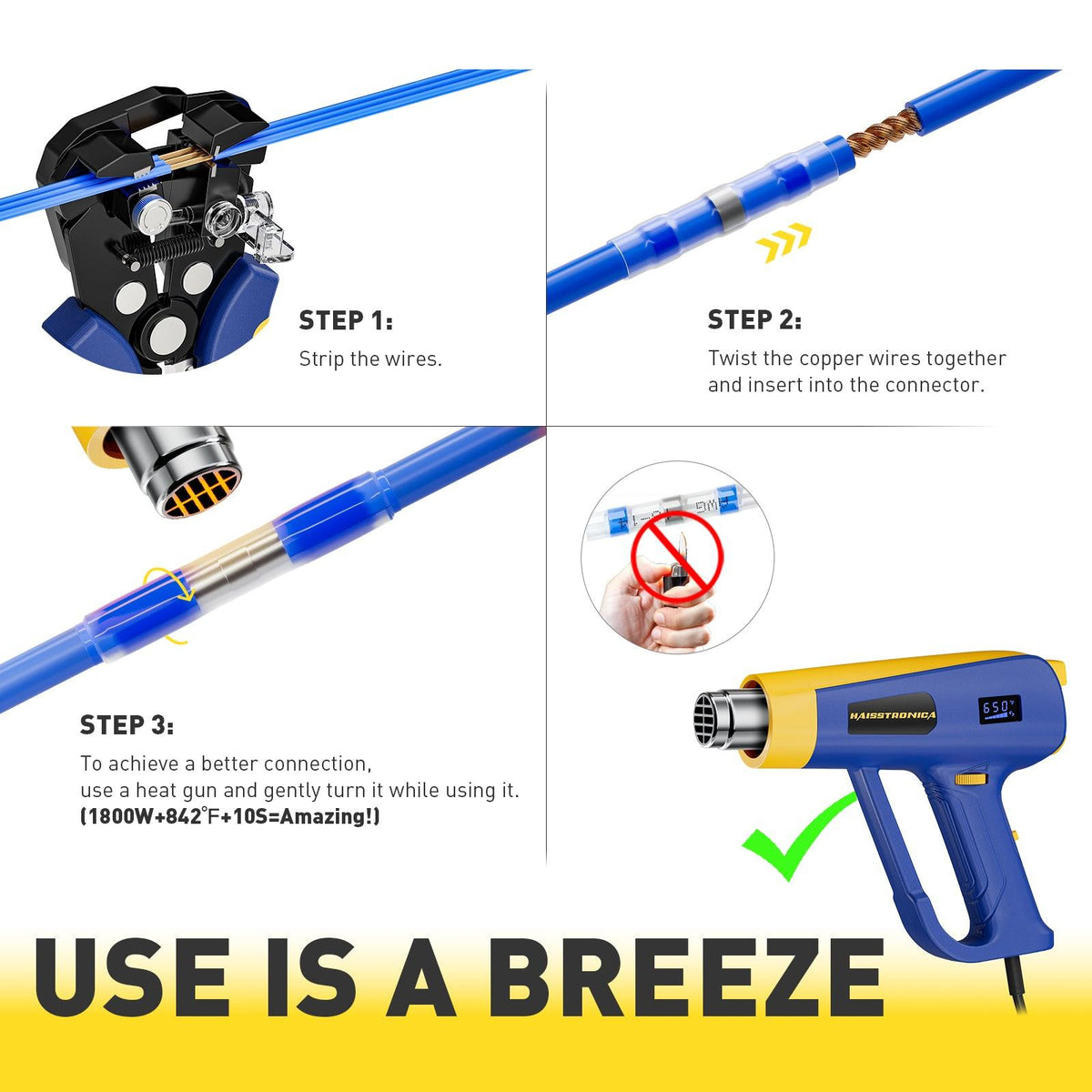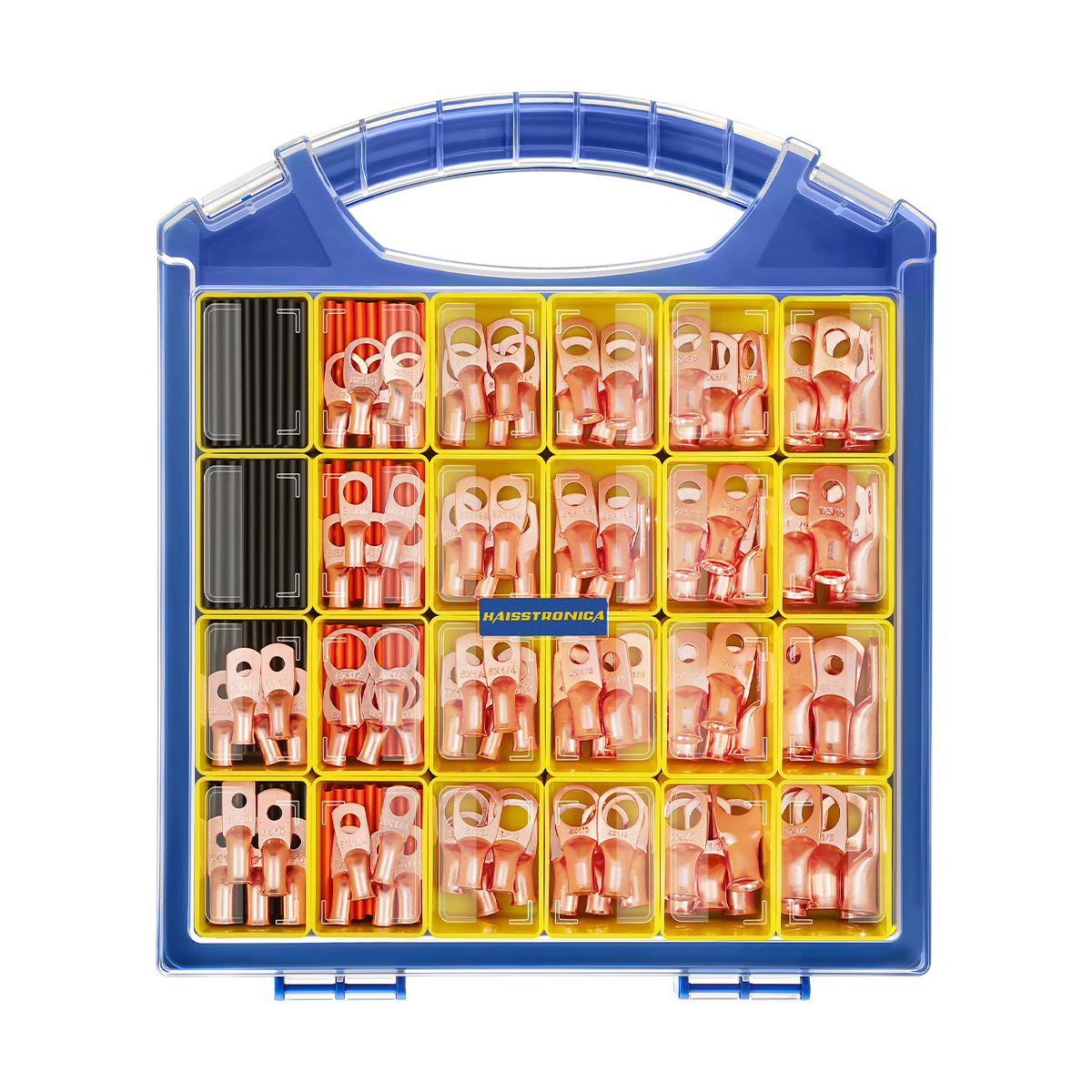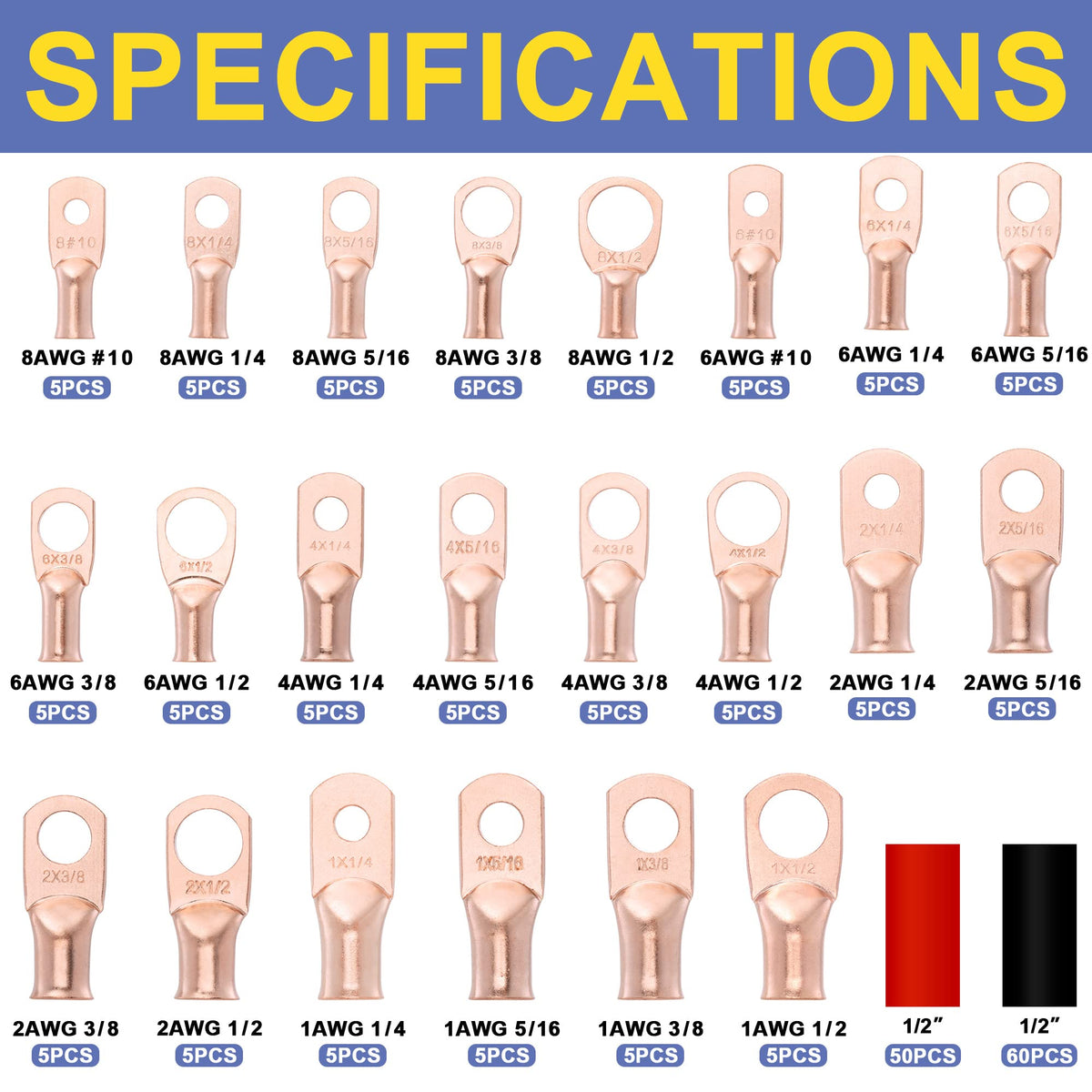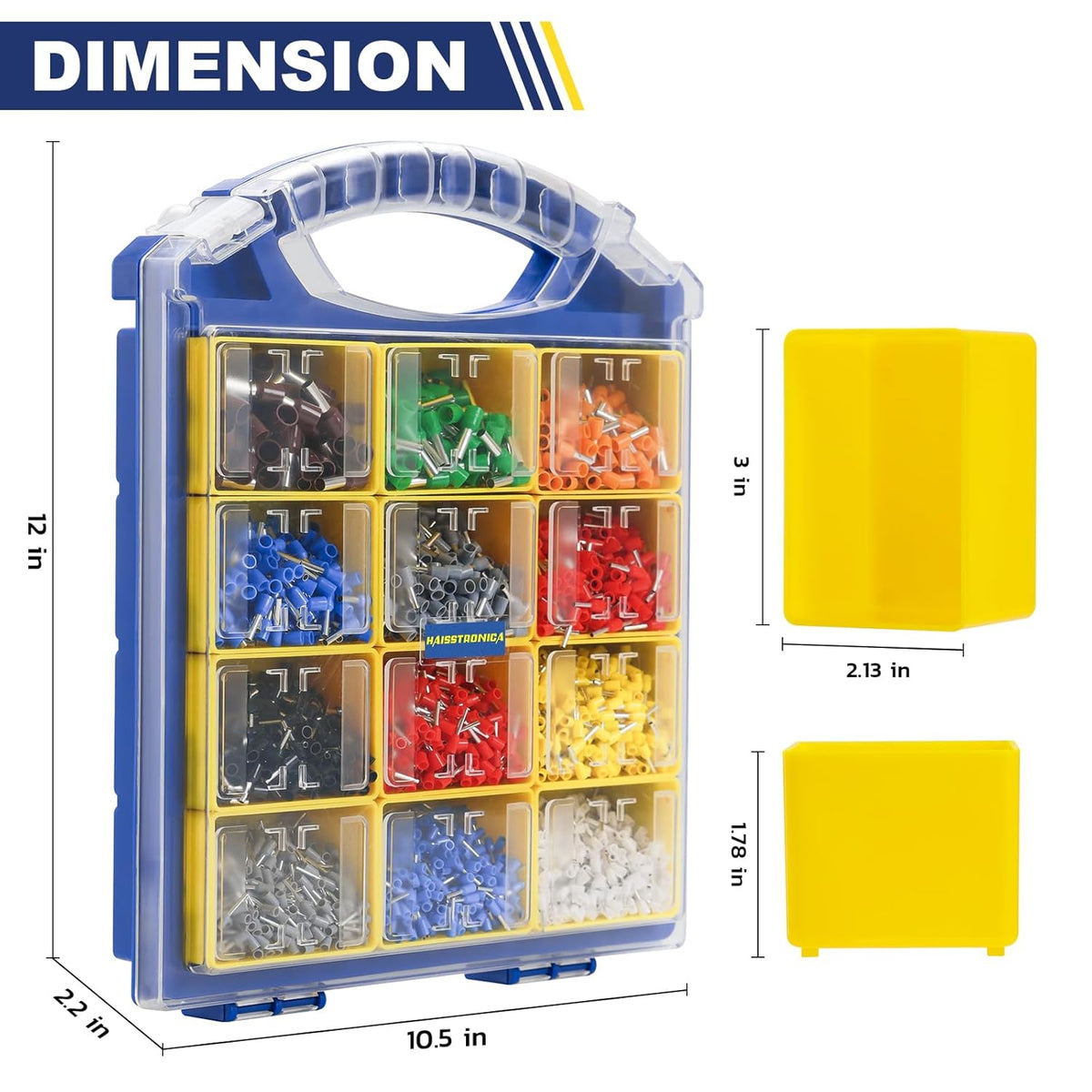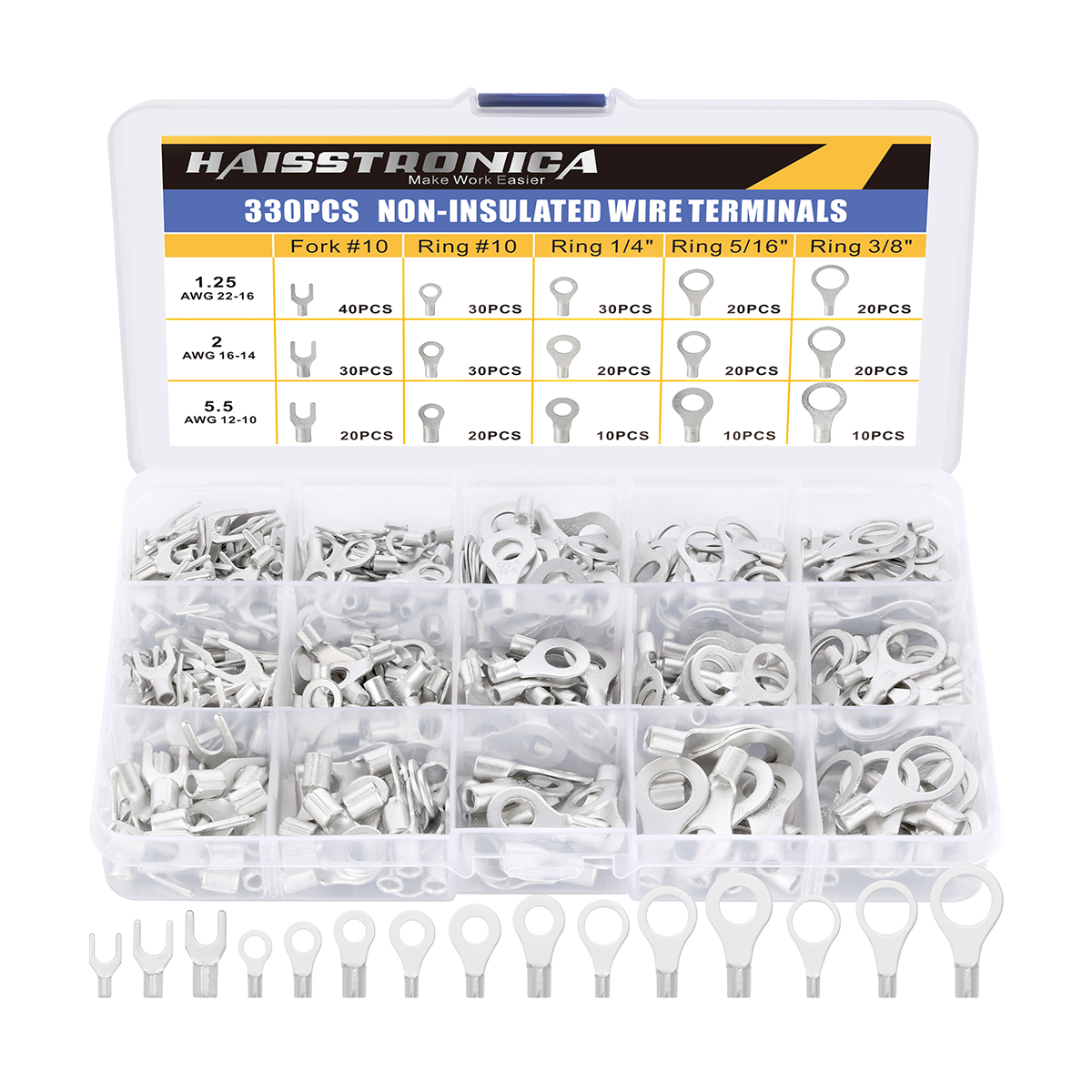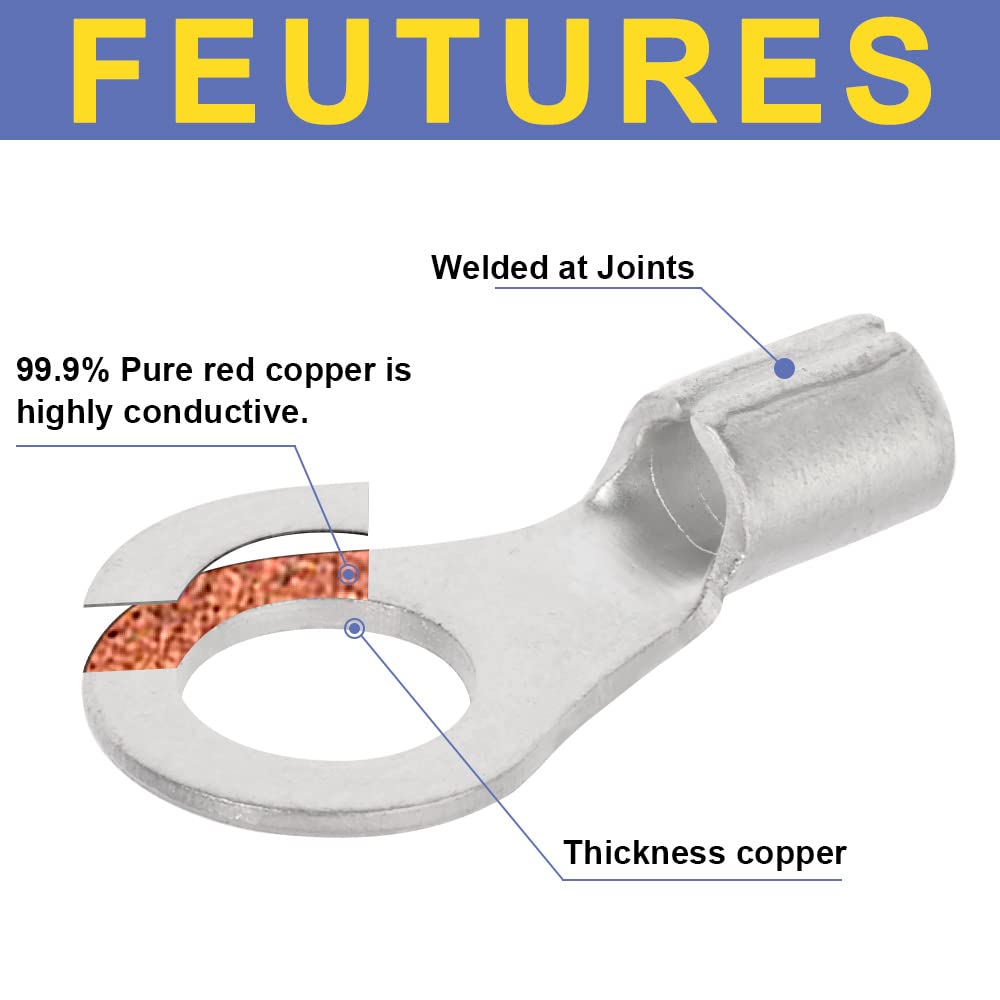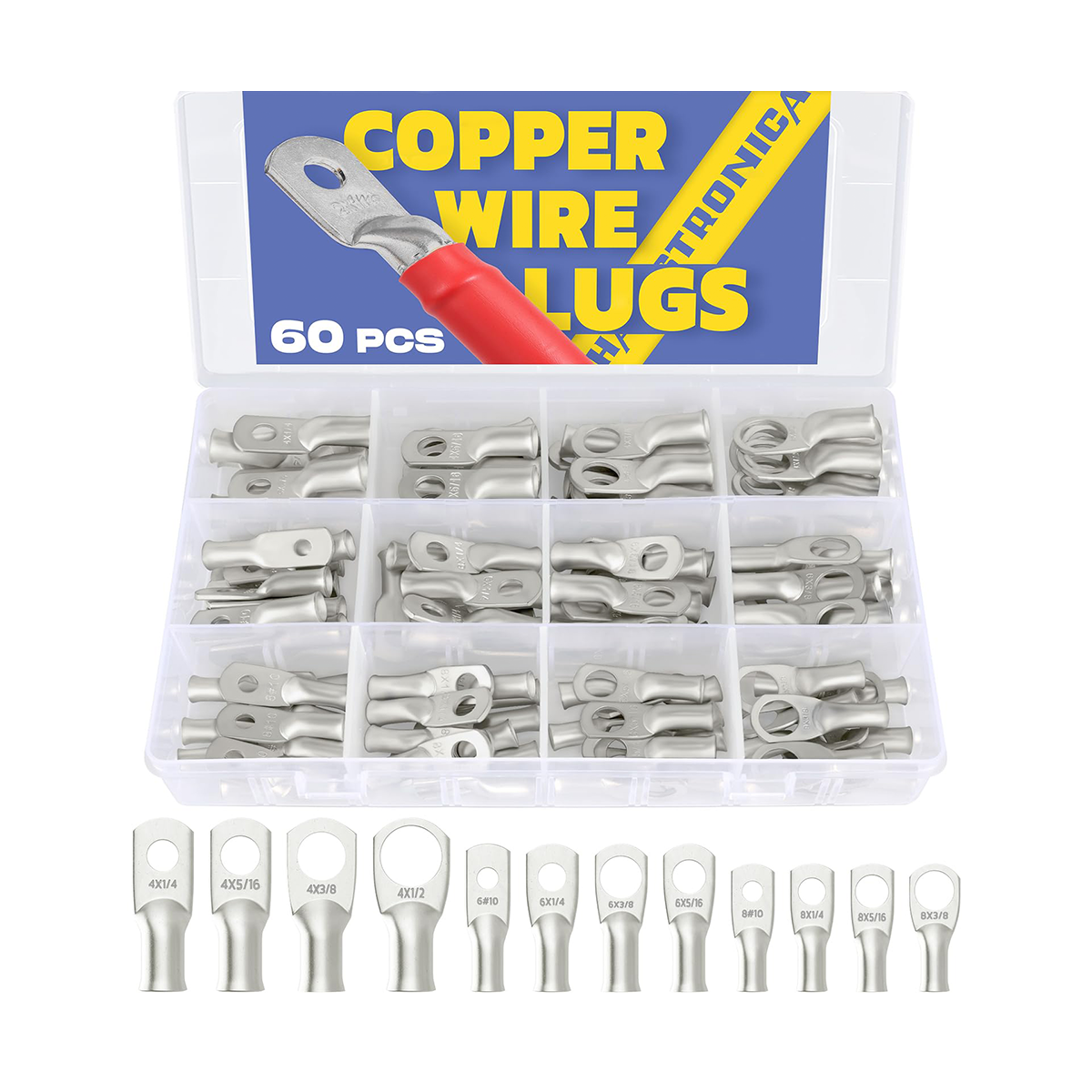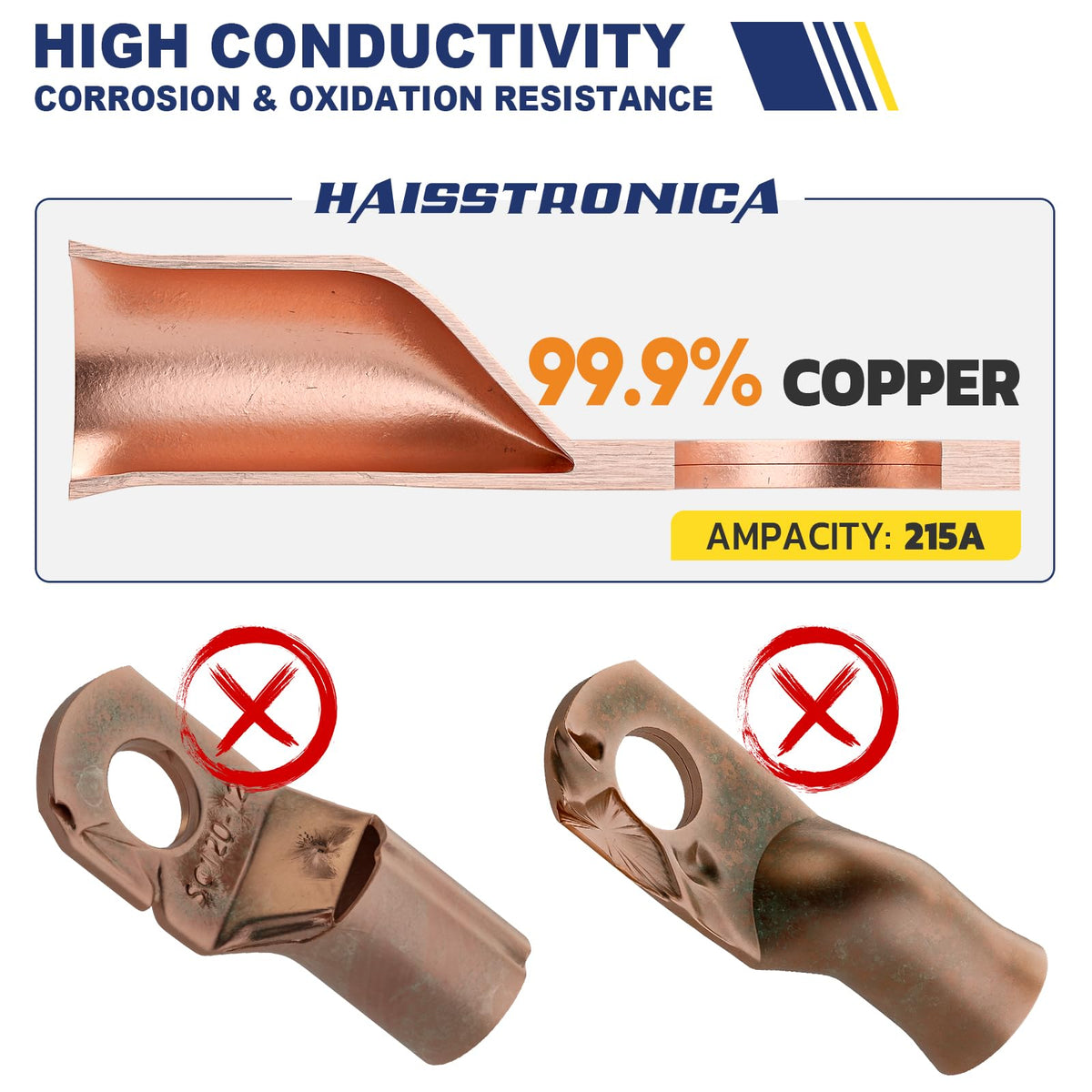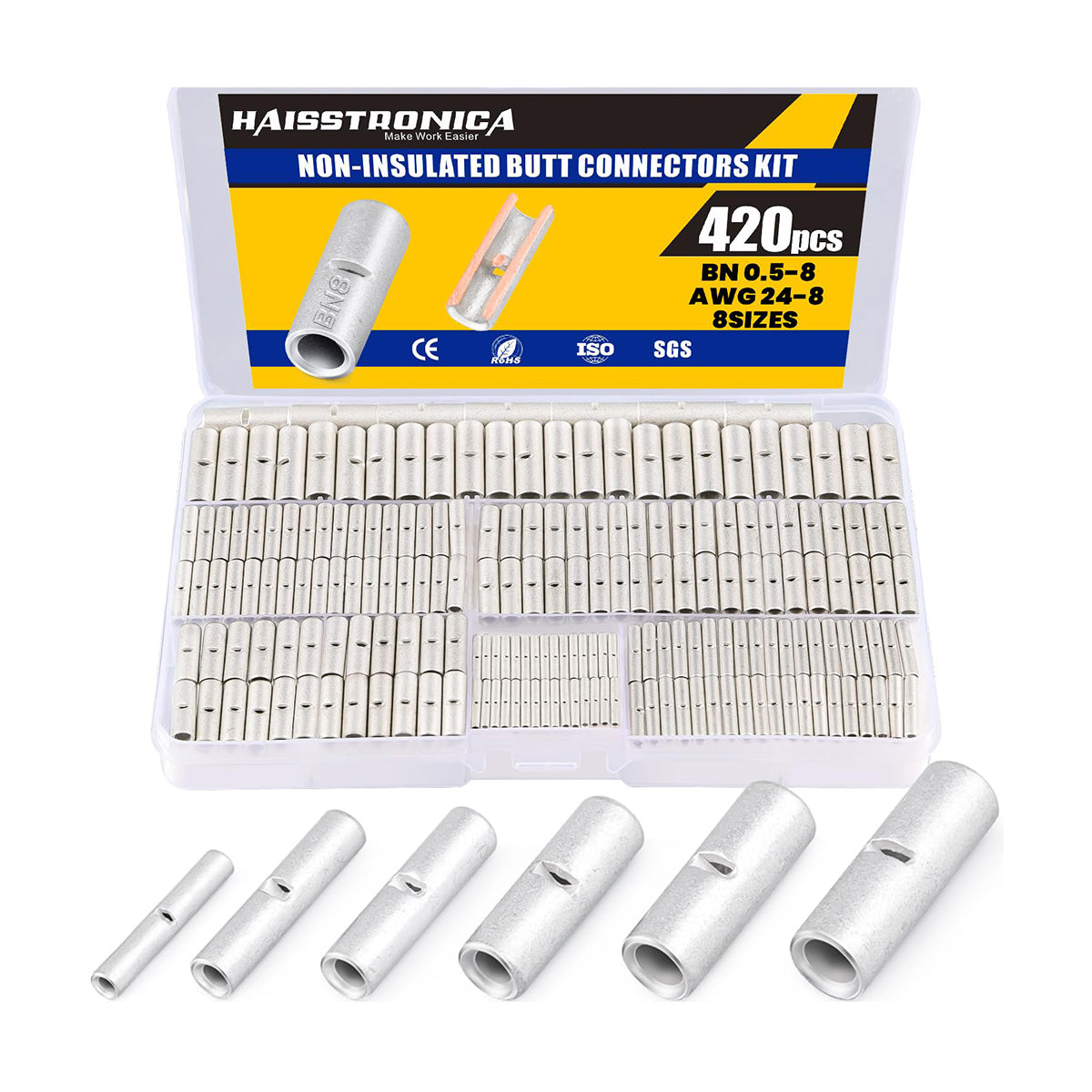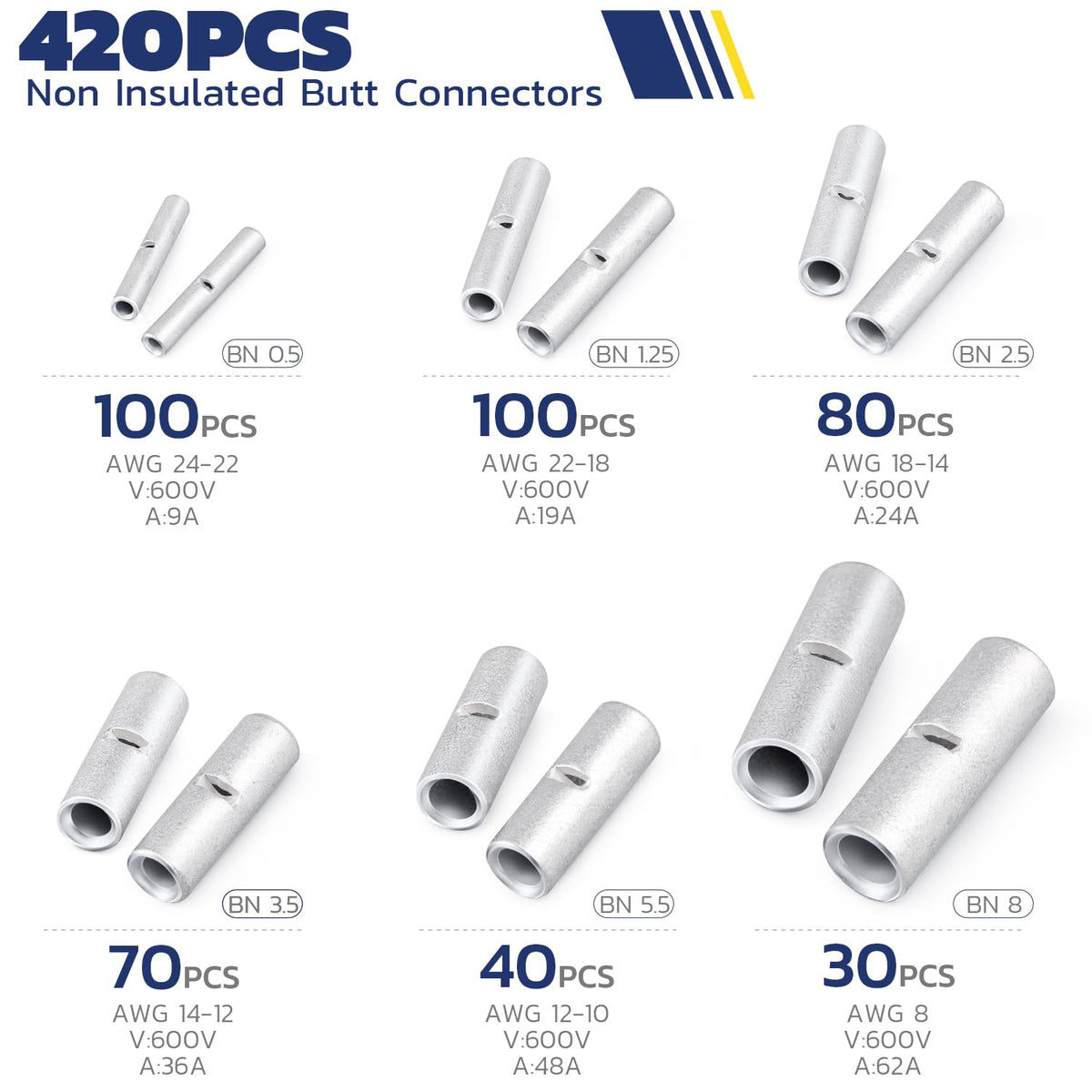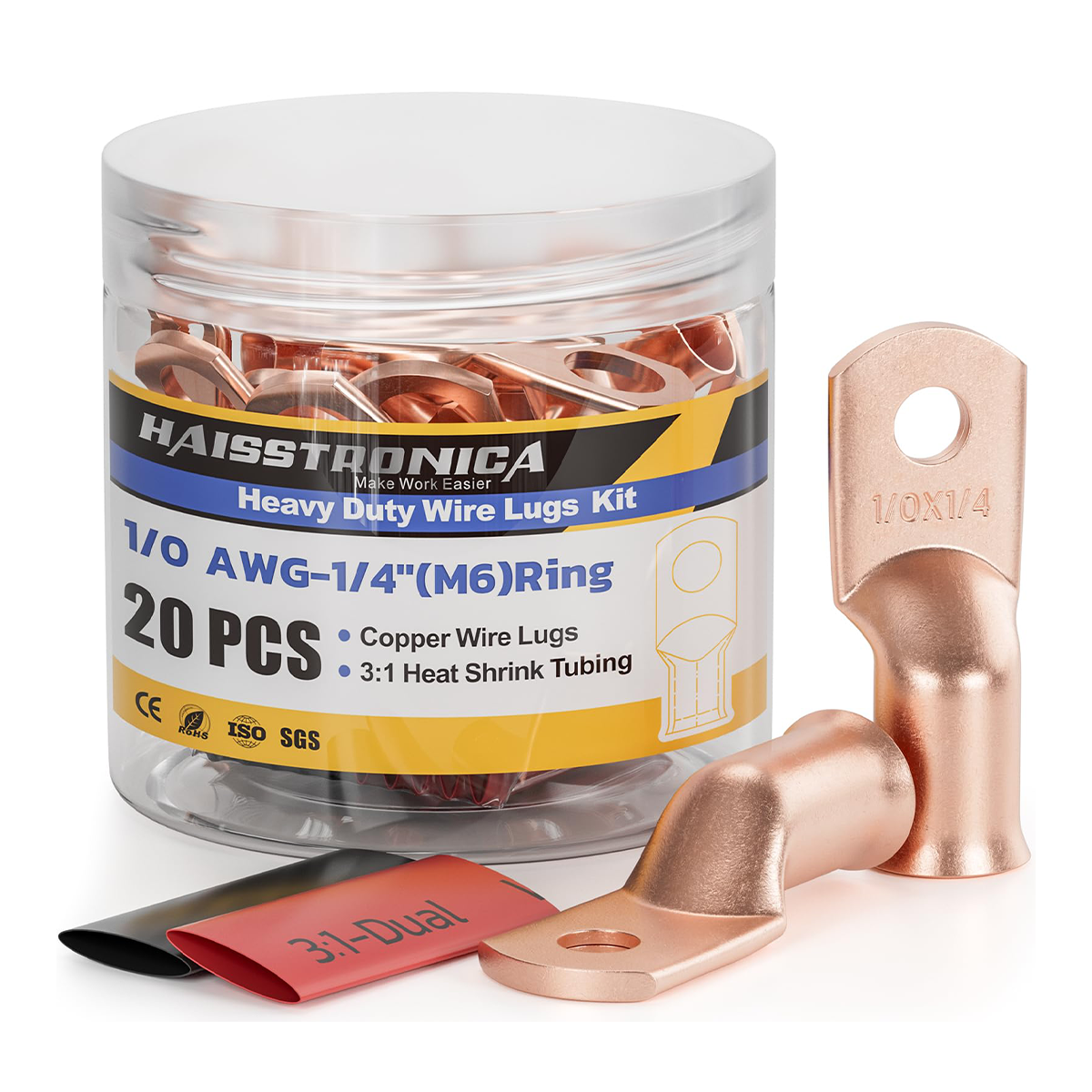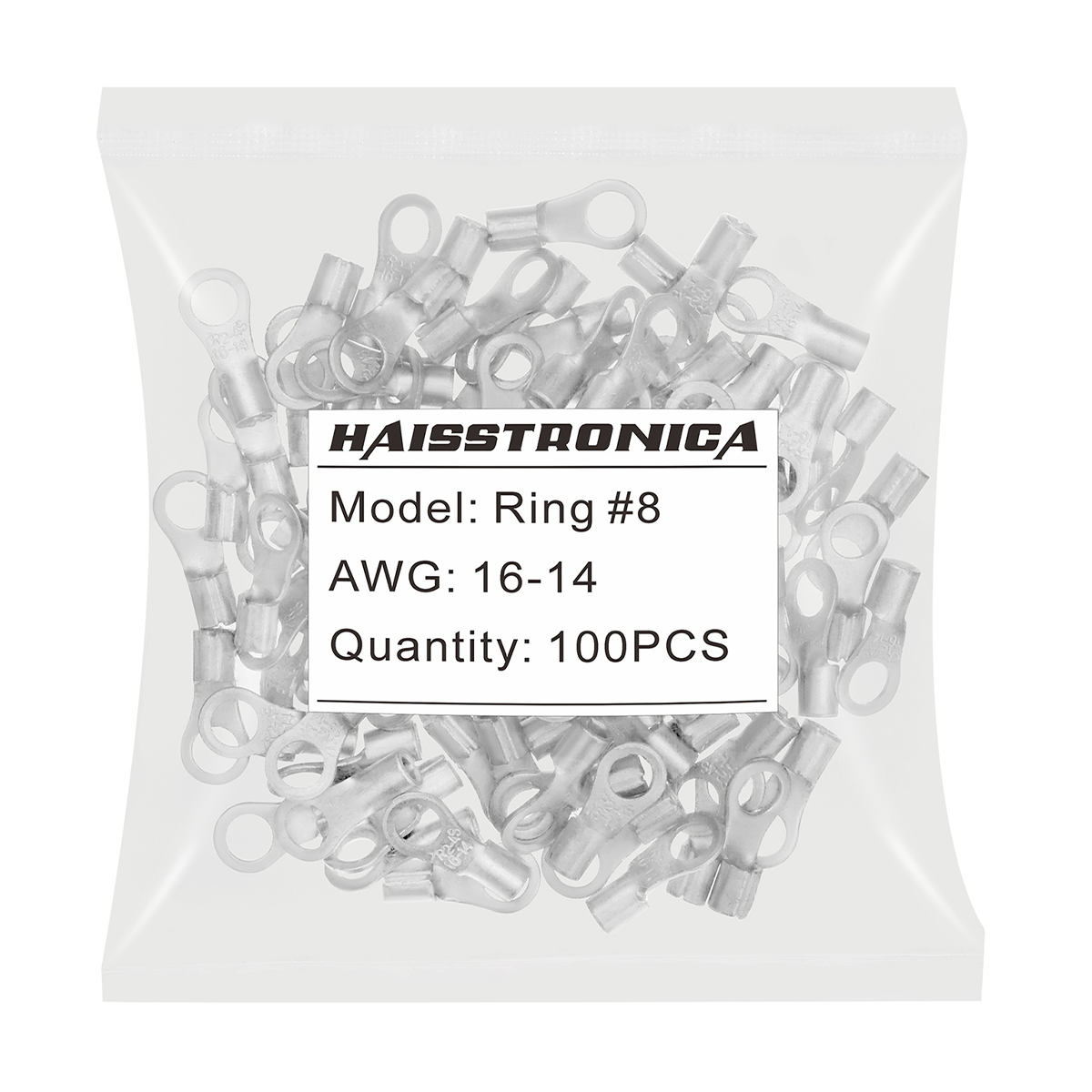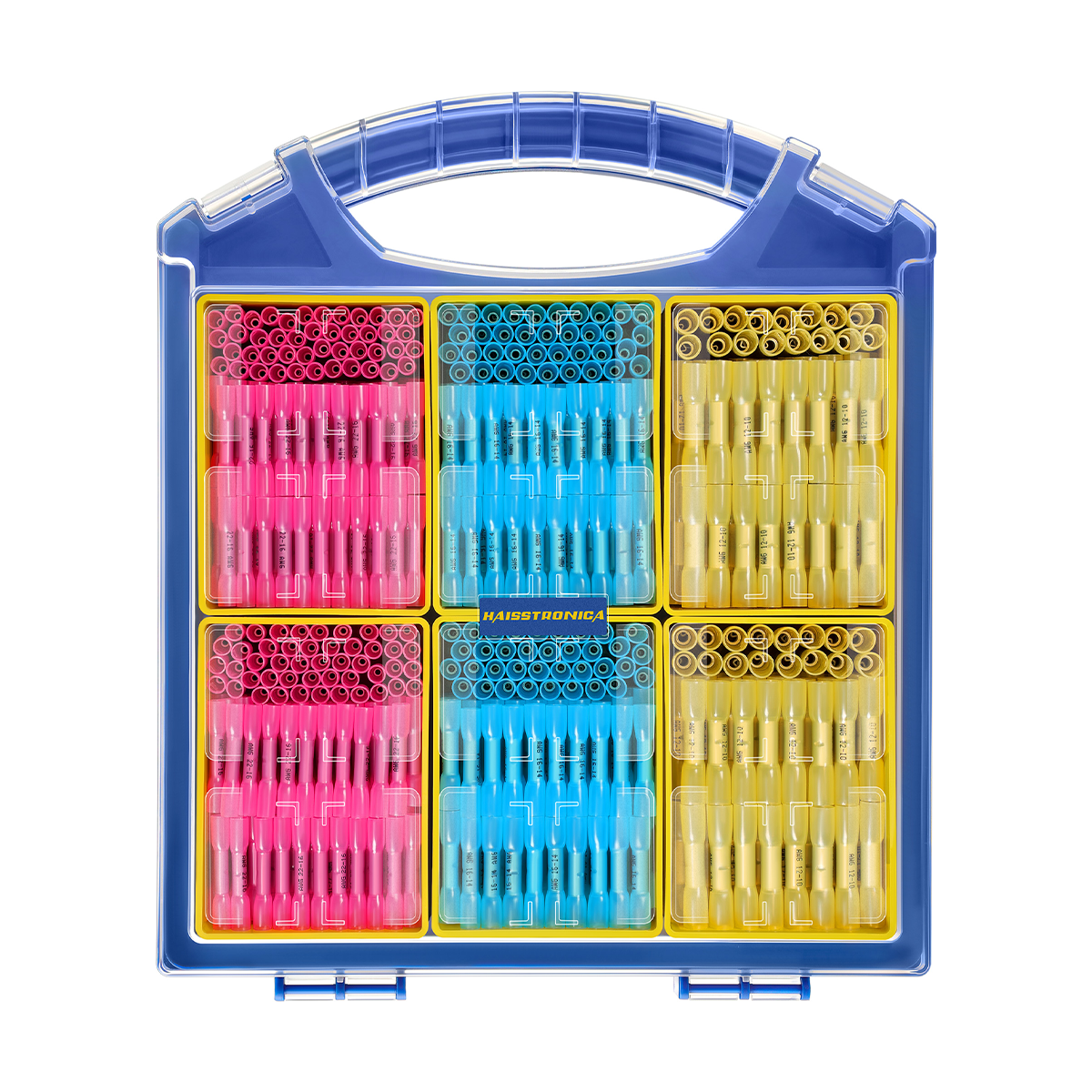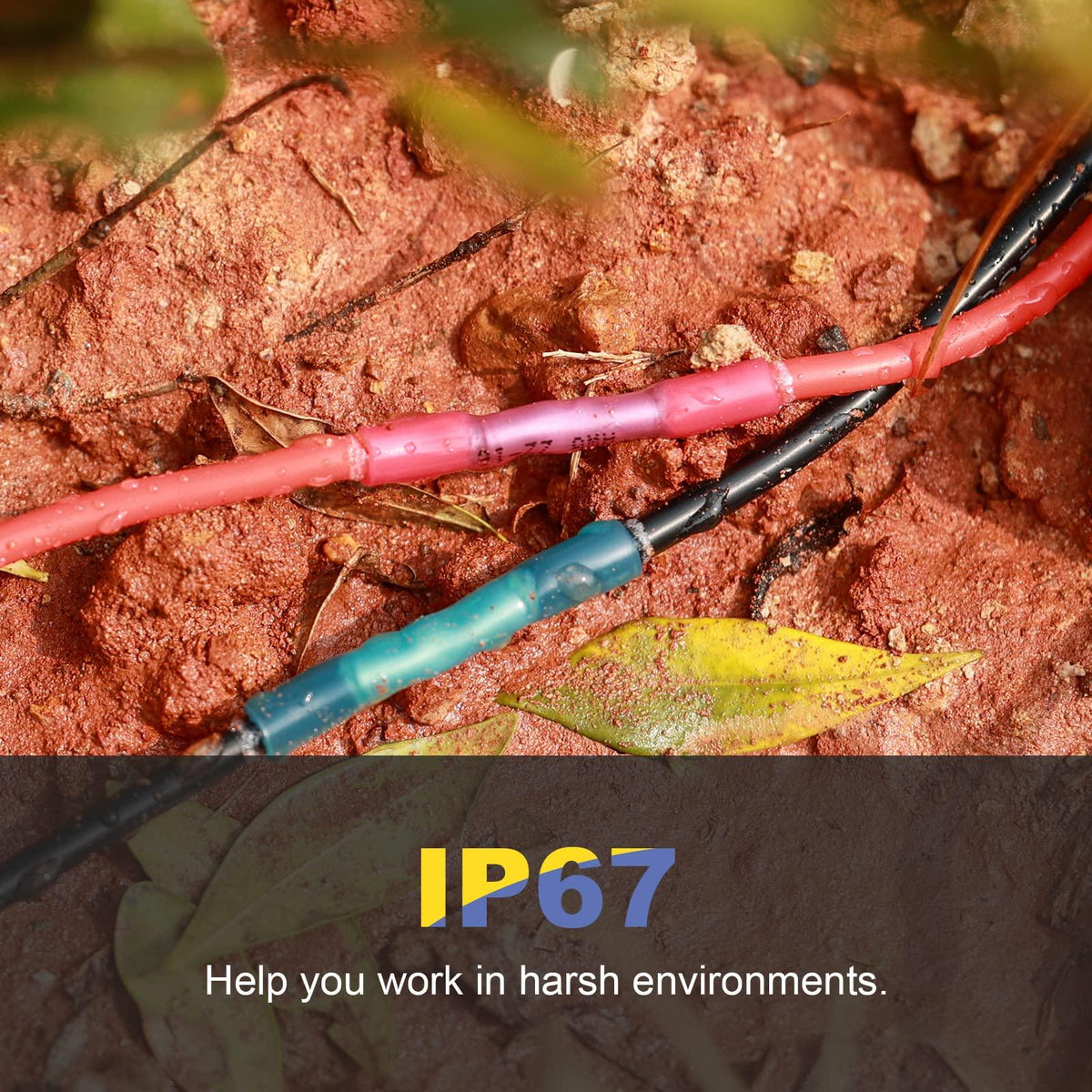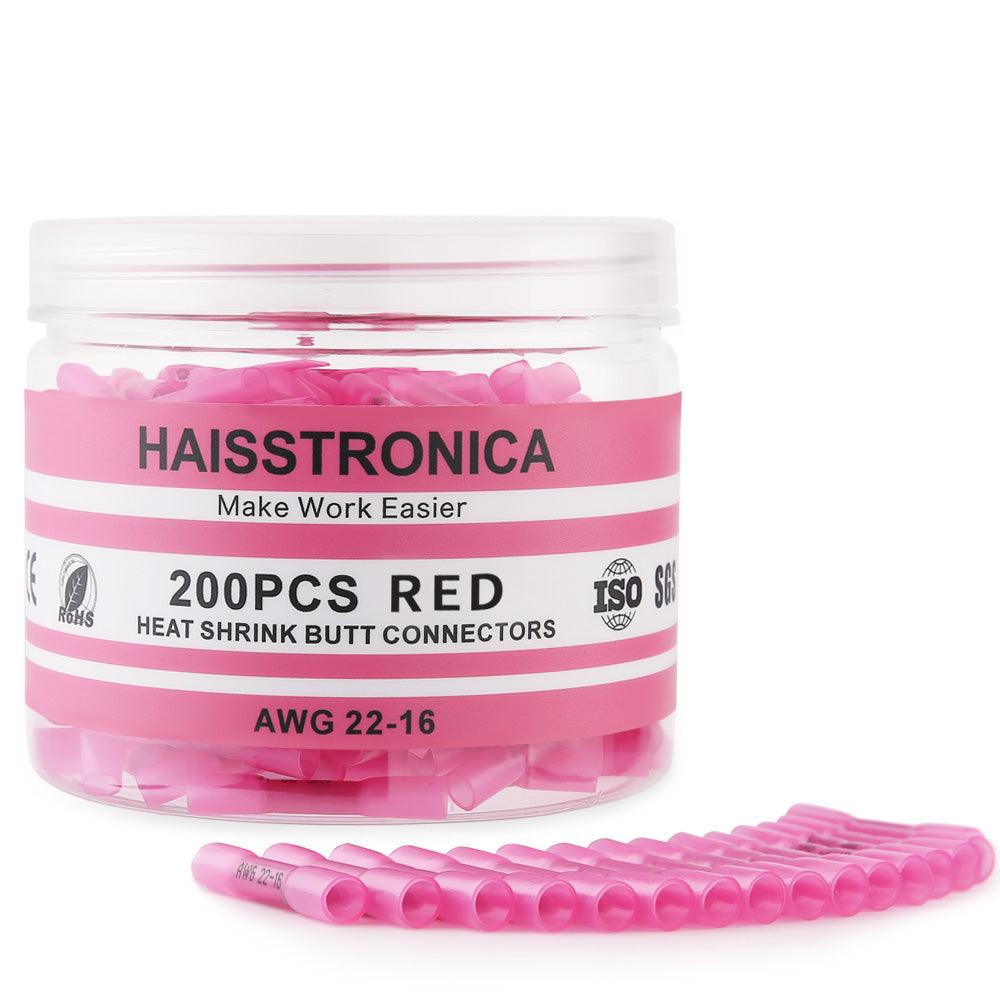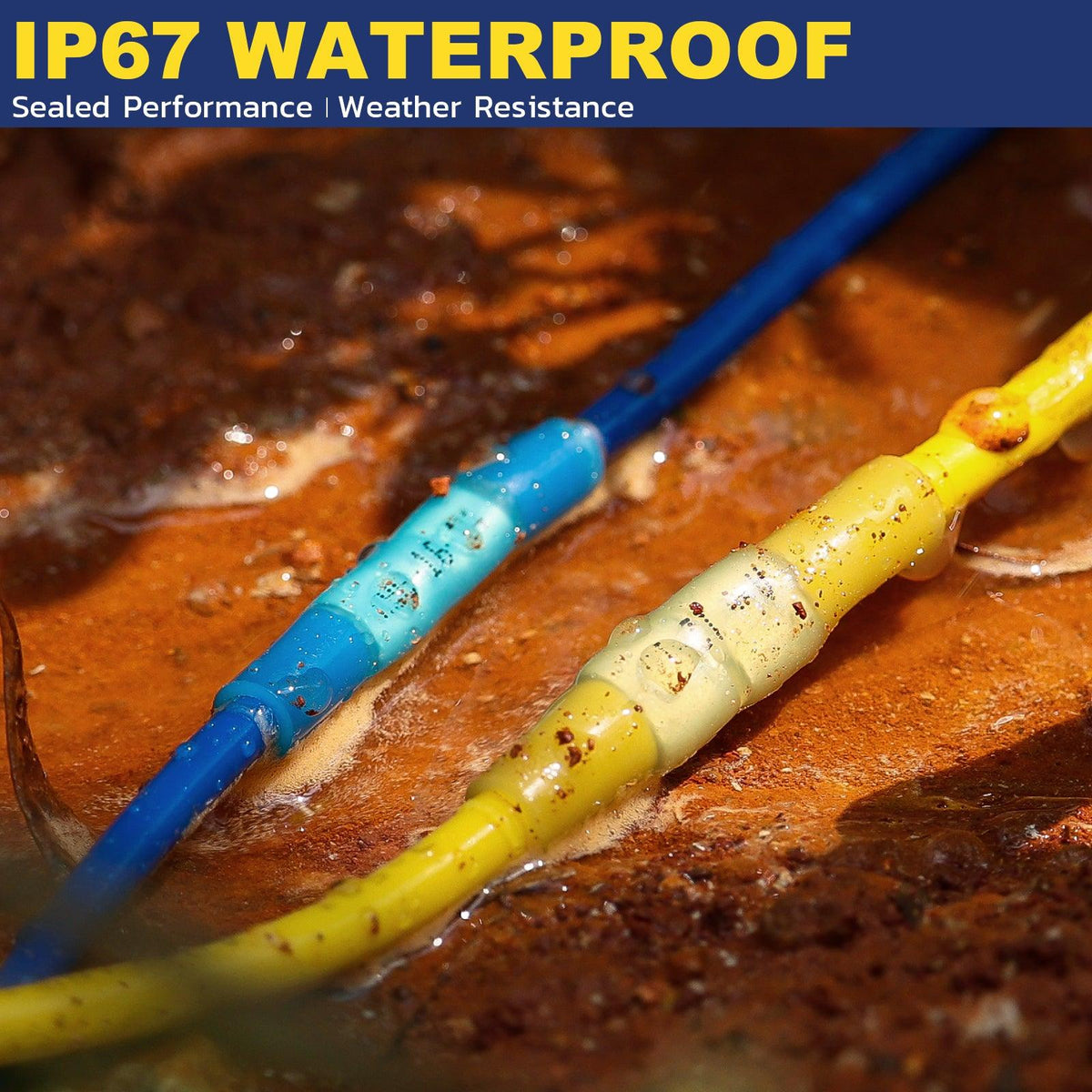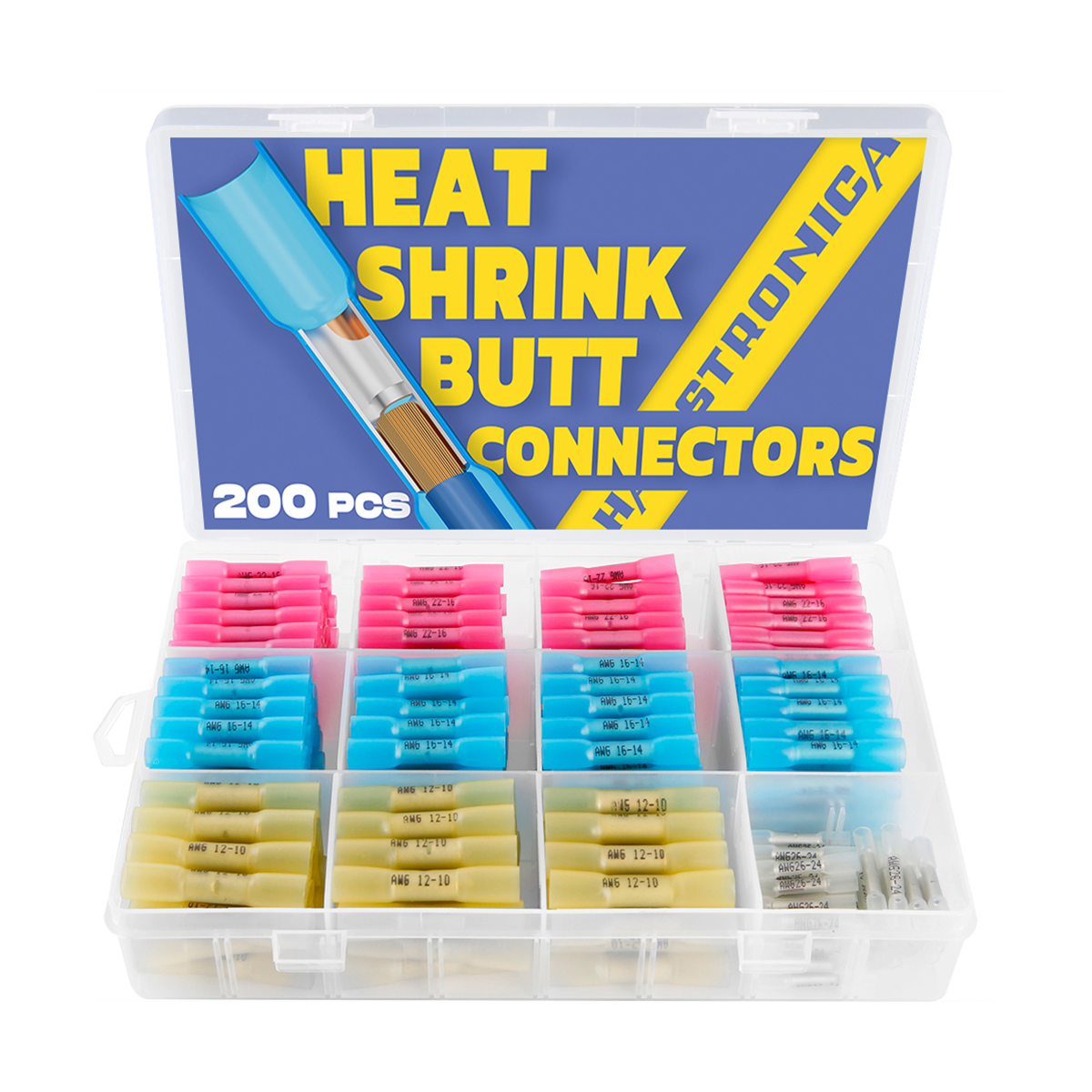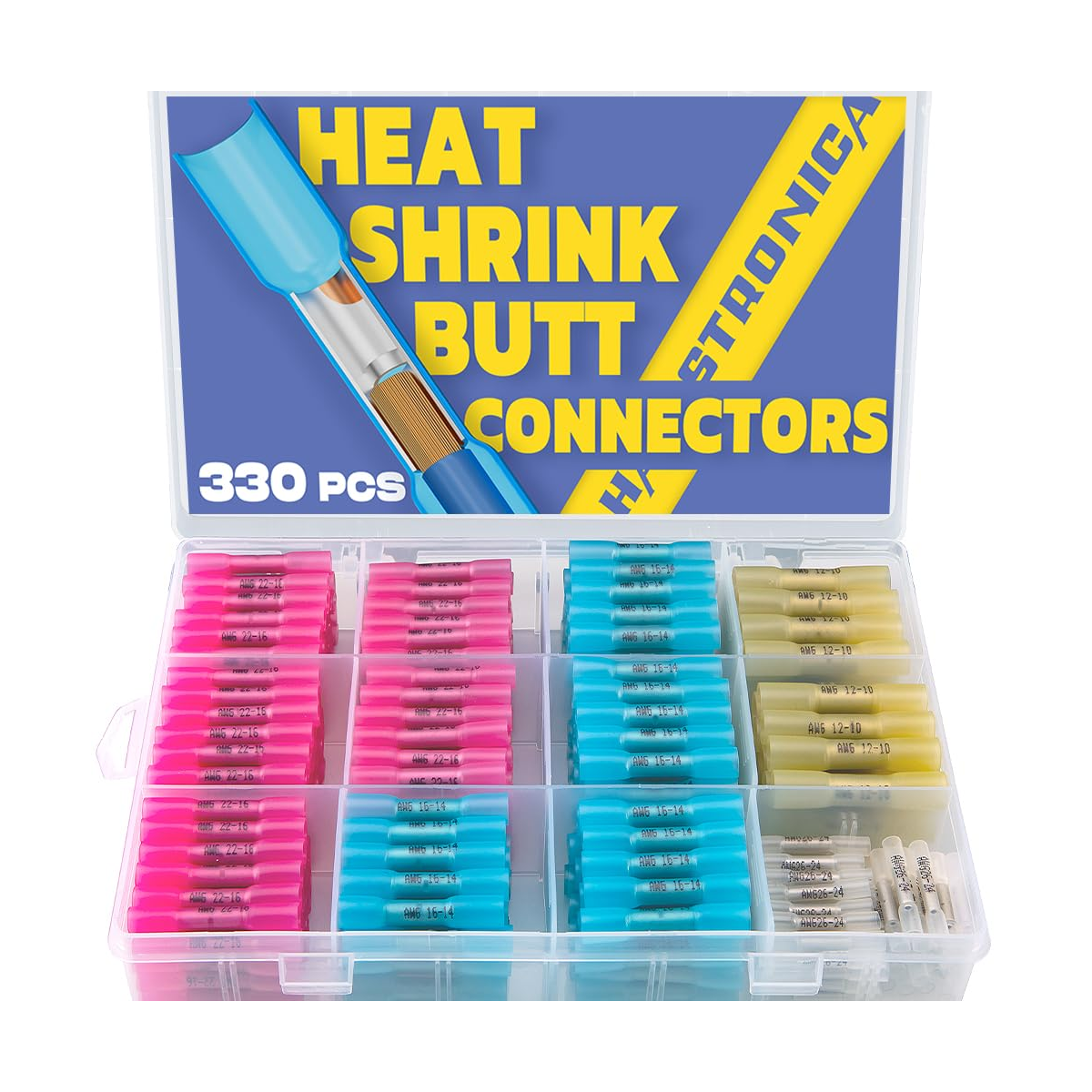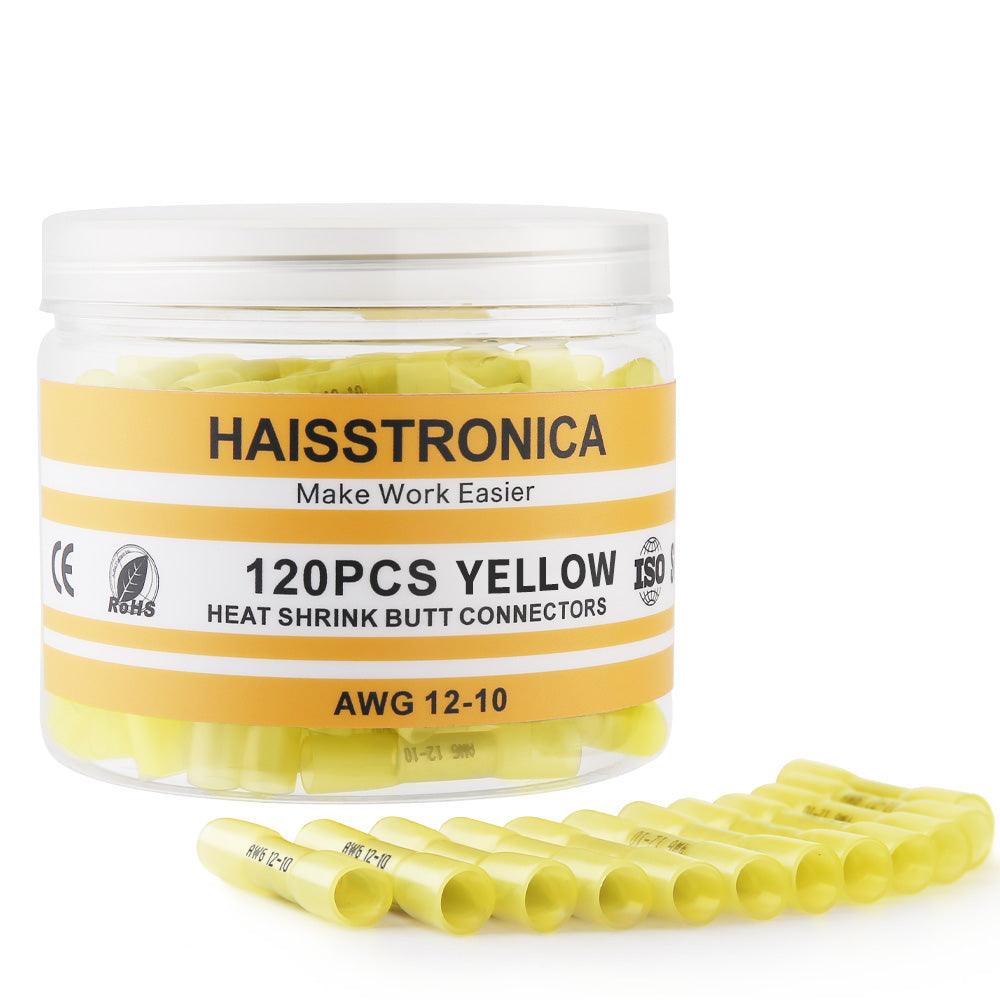Crimping wires is when you join a wire with a connector (like a terminal or a splice) by pressing them together using a crimping tool. Instead of soldering, the crimping tool squeezes the metal connector tightly around the wire, creating a strong mechanical and electrical bond.
The best part? It’ll save you time, providing a reliable connection that’s perfect for electrical work, automotive repairs, and electronics.
Get it wrong, however, and like any break in a circuit, the whole system can fall apart. Worse, poorly crimped wires can pose a danger to anyone who inspects the circuit afterwards. So, if you’re new to wire crimping and don’t know your way around a crimping tool, we’ve got you covered. Here’s everything you need to know.
👉 Upgrade your toolkit with Haisstronica crimpers for wire—precise AWG 22–10 control.
How to Crimp a Wire
Wire crimping isn’t as hard as it sounds. In fact, it’s the simplest way to join two or more wires together – if you do it right. You’ll want to select the best wire crimping tool, adhere to the correct technique, and always perform a final inspection.
Follow these steps:
Step 1. Prepare the Wires
You can’t crimp wires that are covered in insulation. The first step, therefore, is to strip back the insulation—just enough so that the wire can fit the exact dimensions of the connector. Avoid taking too much insulation away, as this can risk future electrocution or undesired connections (e.g., if the wire comes into contact with the metal casing).
Don’t strip the wires too harshly. If you cut away too much material, you can lose more wire strands than necessary, affecting their carrying capacity and compromising the strength of the junction.
Step 2. Choose the Right Crimping Tool
Crimping wires is all about the right tool. Different tools are designed for different sizes of connectors and wires. You want to select a tool that’s reliable, safe, and effective. Too often, non-tradespeople decide they don’t need any specialist equipment. After all, they’re only squeezing together two bits of wire – can’t you achieve the same result with a pair of pliers?
That’s a dangerous mistake. Not only will this result in a loose crimp, but worse, it can result in short circuits, electrical fires, and other safety hazards. The dangers cannot be understated. Never cut corners – always use a proper electric wire crimper.
Step 3. Select the Correct Connector
Just as important as your wire crimping tool is the connector. This is what wraps around the two wires, holding them together. Connectors come in all shapes and sizes – select the one that matches the cross-sectional area of the two wires.
See how others use crimp connectors by video:
Common options include:
· Ring terminals
· Spade terminals
· Bullet connectors
· Fork terminals
· Heat shrink connectors
Each type of connection has its pros and cons. For example, spade terminals (shaped like a fork) allow for easy connection and disconnection from screw terminals, whereas heat-shrink connectors seal and protect the connection from moisture and corrosion.
Step 4. Insert and Crimp
Now comes the main event. Insert the stripped wire ends into the connector. You want to ensure that the wires touch each other and are fully seated within the connector.
Once you’re happy with the connection, compress the connector using your wire crimping tool. Remember, you want the right wire crimper for the connector. If you are in doubt, look at the connector manufacturer’s specifications.
Step 5. Inspect. Inspect. Inspect.
The last step is the most important—inspect. Look at your connection to ensure there are no exposed wires or loose connectors. Test your connection to see if it's secure and electrically and mechanically sound. You should also perform a pull test.
If you’re not happy with the connection, there’s no harm in starting again. It’s better to be safe than sorry.
👉 Power up projects with Haisstronica crimp tools for heat-shrink connectors.
Potential Dangers from Incorrect Wire Crimping
Crimping wires can be dangerous if you get them wrong. It’s not just about securing the connection but also about guaranteeing the safety of everyone who relies on it. Fortunately, with the right approach, crimping is both safe and simple. Here's how to make sure you get it right.
Here are some safety considerations:
· Use the Correct Sizes. Selecting the right crimping tool, connector size, and wire size is crucial to your success. If the connector is too small, even with the best crimping tool, you’ll never achieve a perfect connection.
· Inspect Your Wires. If any existing damage, such as exposed conductors, fraying, or cuts, is present, replace the wire. Don’t crimp damaged wires.
· Avoid Water or Damp. Electricity and water don’t mix. Always work in a dry environment to prevent short circuits.
· Wear Protective Equipment. When crimping, wear insulated gloves and safety goggles to protect yourself from electrical hazards or flying debris.
· Disconnect the Power. This is a must! Never operate on wires that have a live connection. Turn off the device, unplug it, or switch off the relevant circuit breaker. It’s best to take extra precautions.
Choosing the Best Wire Crimping Tools
It’s sensible to invest in high-quality wire crimping tools, especially if you’re a professional who routinely works with wires. It’ll make your job safer, easier, and more efficient. Some common tools include:
· Ratcheting crimpers provide precise control and uniform crimps.
· Hydraulic crimpers are designed for large wire sizes and offer immense pressure for challenging connections.
· Battery-powered crimpers are fast and efficient but limited by their power capacity.
· Manual crimping tools are the gold standard for most projects. Similar to hand-held pliers, they’re endlessly reliable.
👉 Get stronger crimped wire joints using Haisstronica’s AWG 22–10 ratchet crimper.
We recommend the Ratchet Wire Terminal Crimping Tool for AWG 22-10 Heat Shrink Connectors. It’s suitable for three different crimping ranges (A.W.G. 22-16, 16-14, and 12-10). The ergonomically designed handle provides maximum comfort and allows you to apply maximum pressure, which can be further adjusted using the compression wheel. Plus, the ratchet structure offers a smooth crimping action and good release. It’ll secure your wires as well as any solder.
If that’s not the right tool for your task, we offer a range of other crimping tools, wire connectors, and wire that are perfect for almost any electrical task.
Ready to tackle your next wiring project? Shop our full range of crimping tools today for professional-grade results.
Crimp heat-shrink terminals fast with the Haisstronica crimpers tool. Our calibrated electrical wire crimper delivers uniform compression on AWG 22–10, while the ergonomic handle and quick-release make swaps effortless. The geared ratchet crimp tool ensures a secure, repeatable finish that looks pro, not battered.
👉 Faster connector crimping starts with the Haisstronica ratcheting design.
